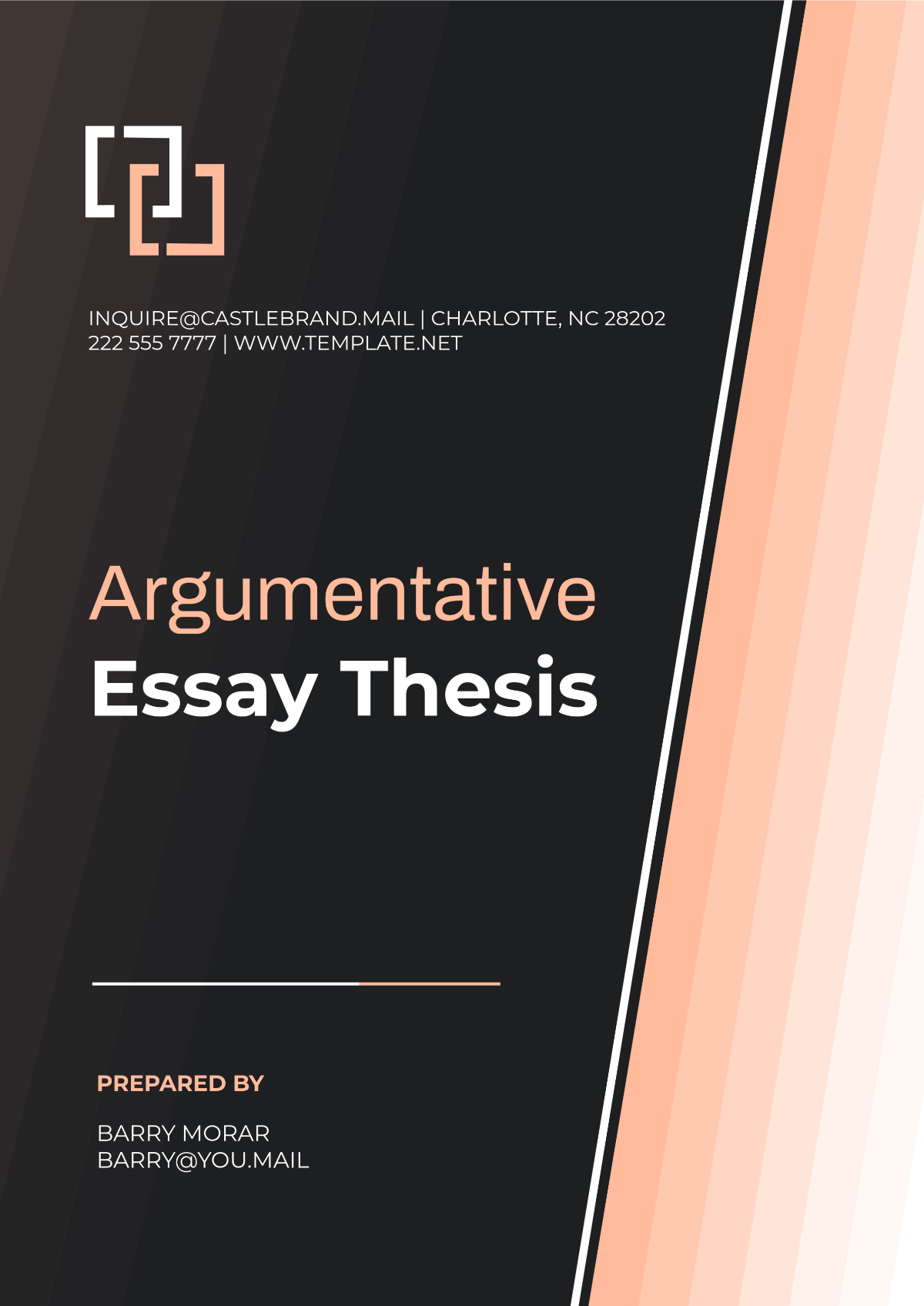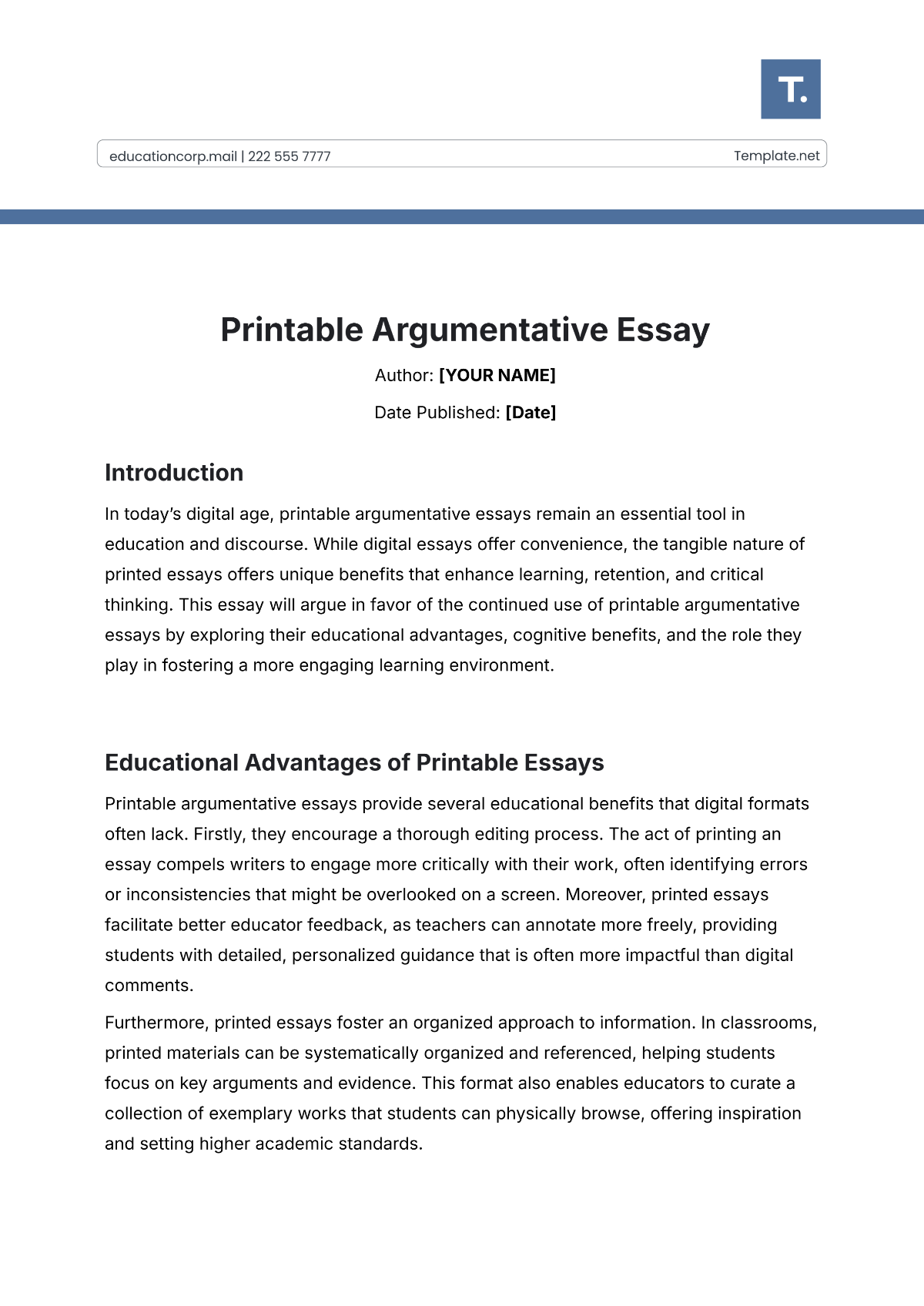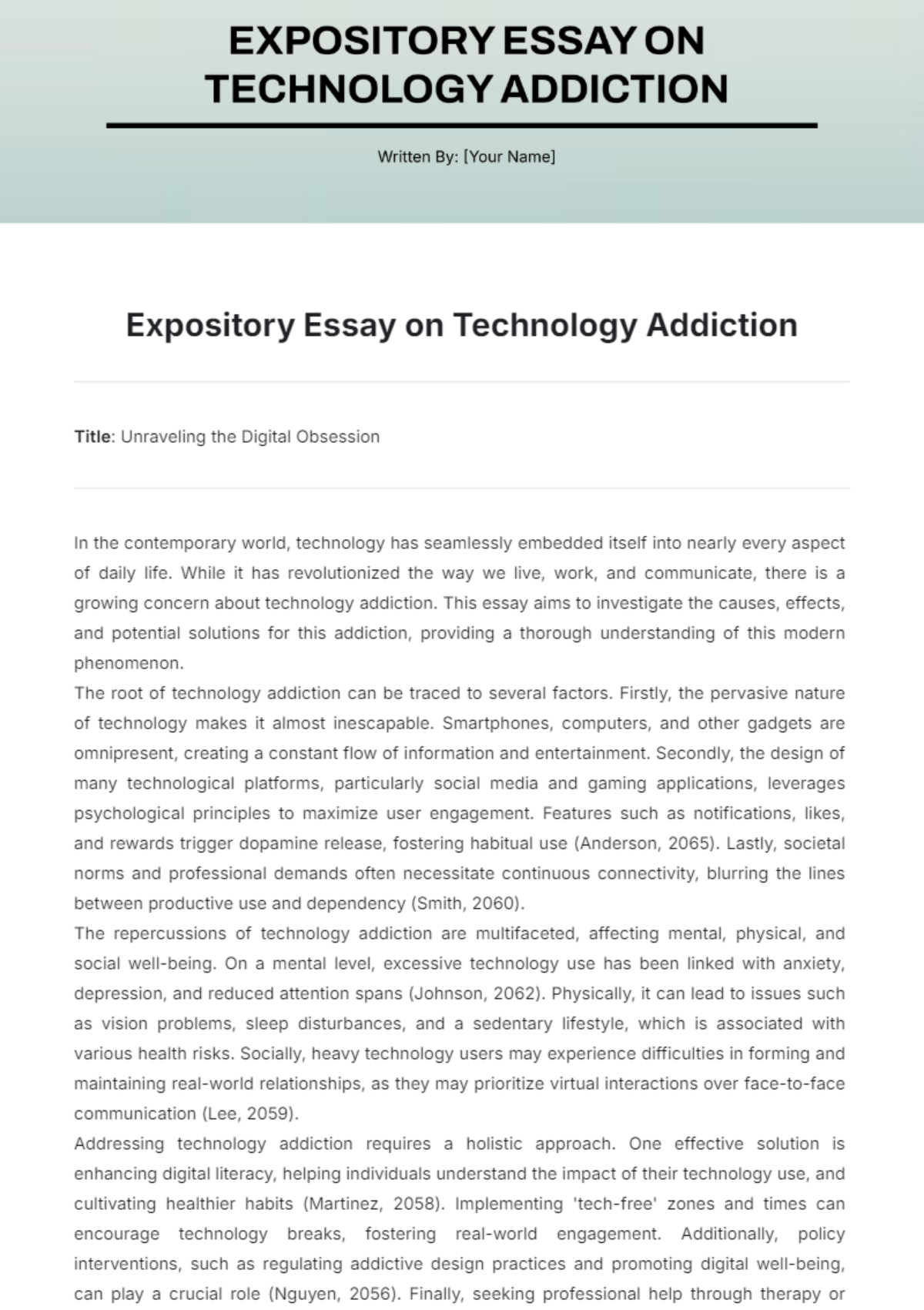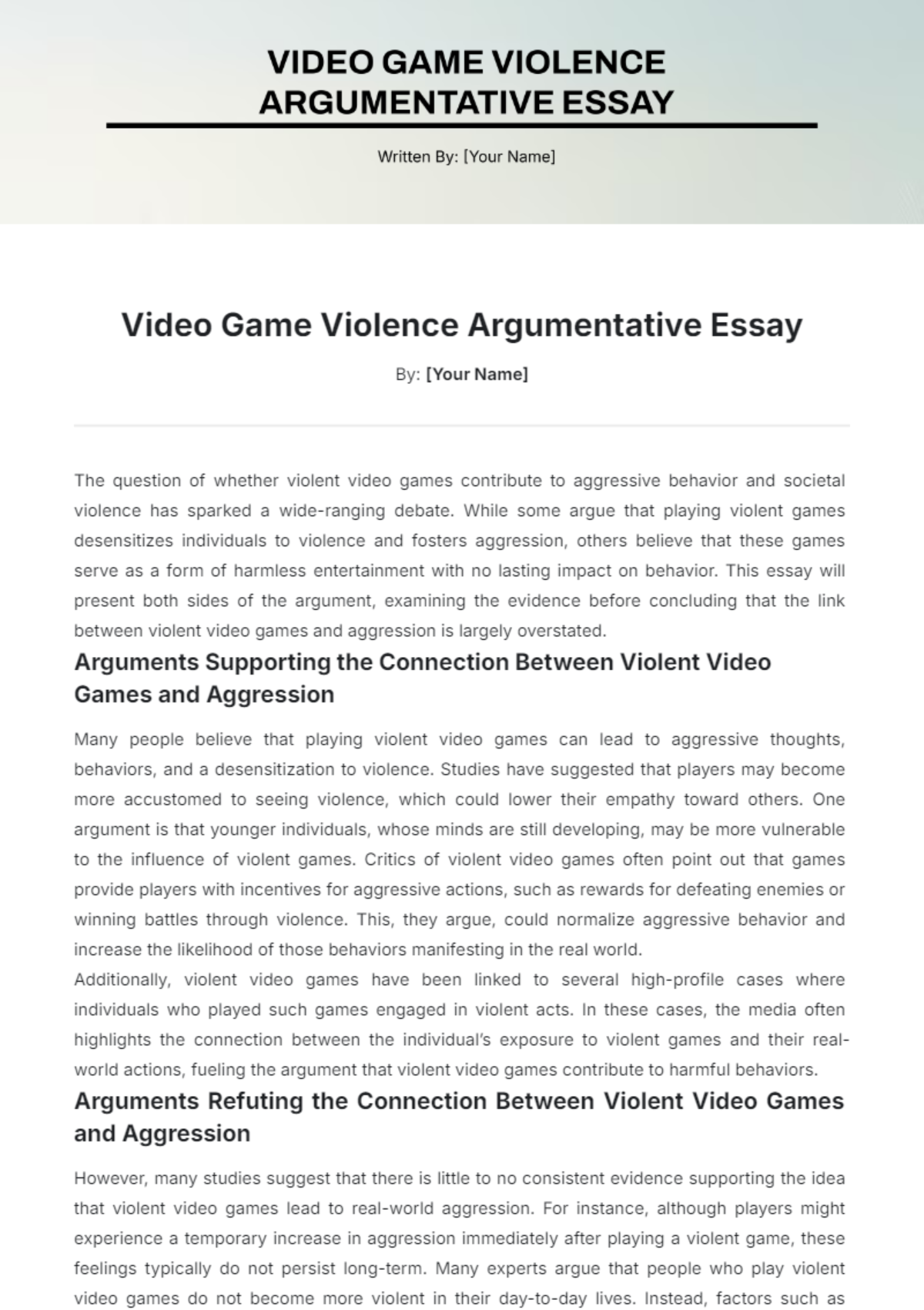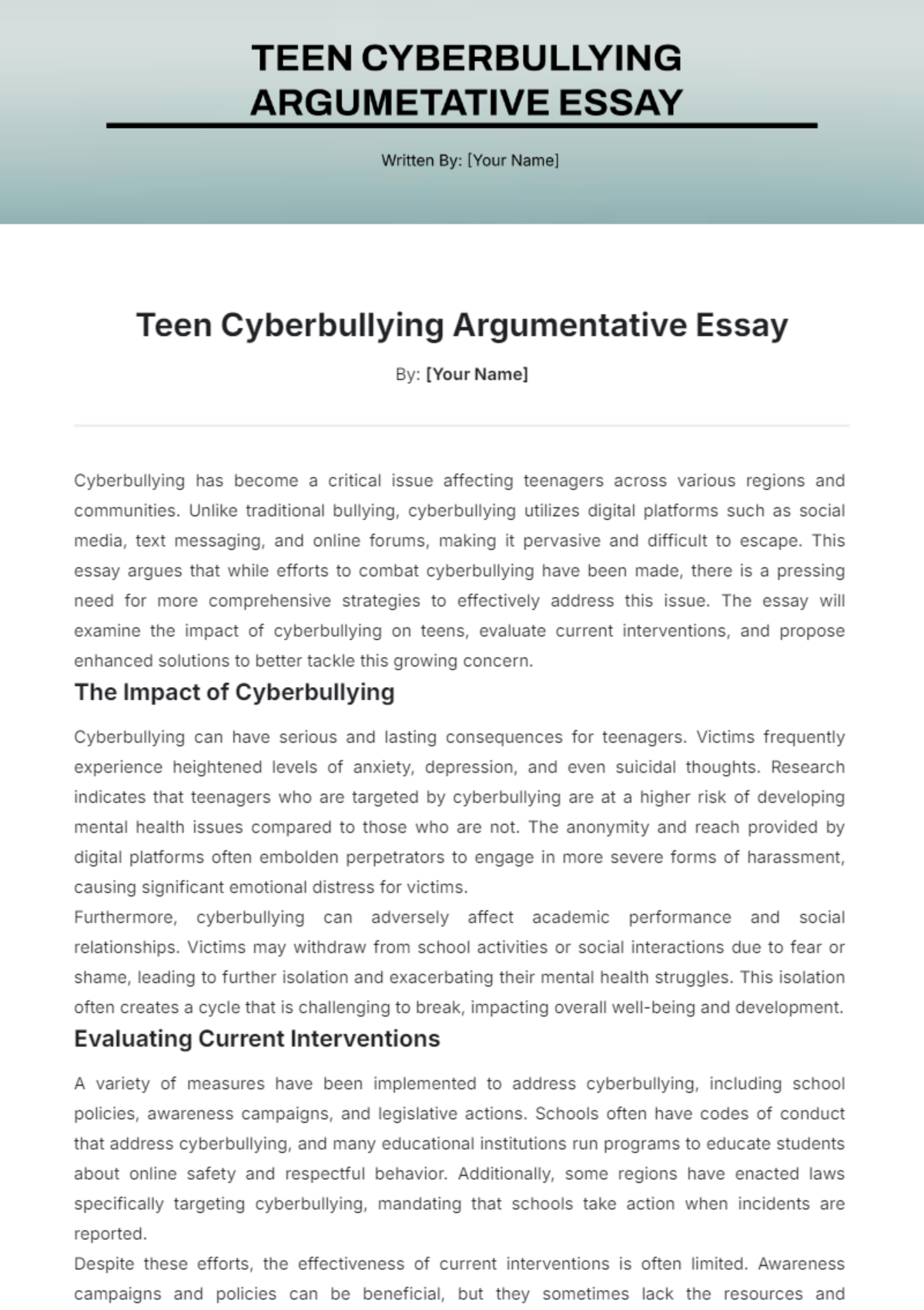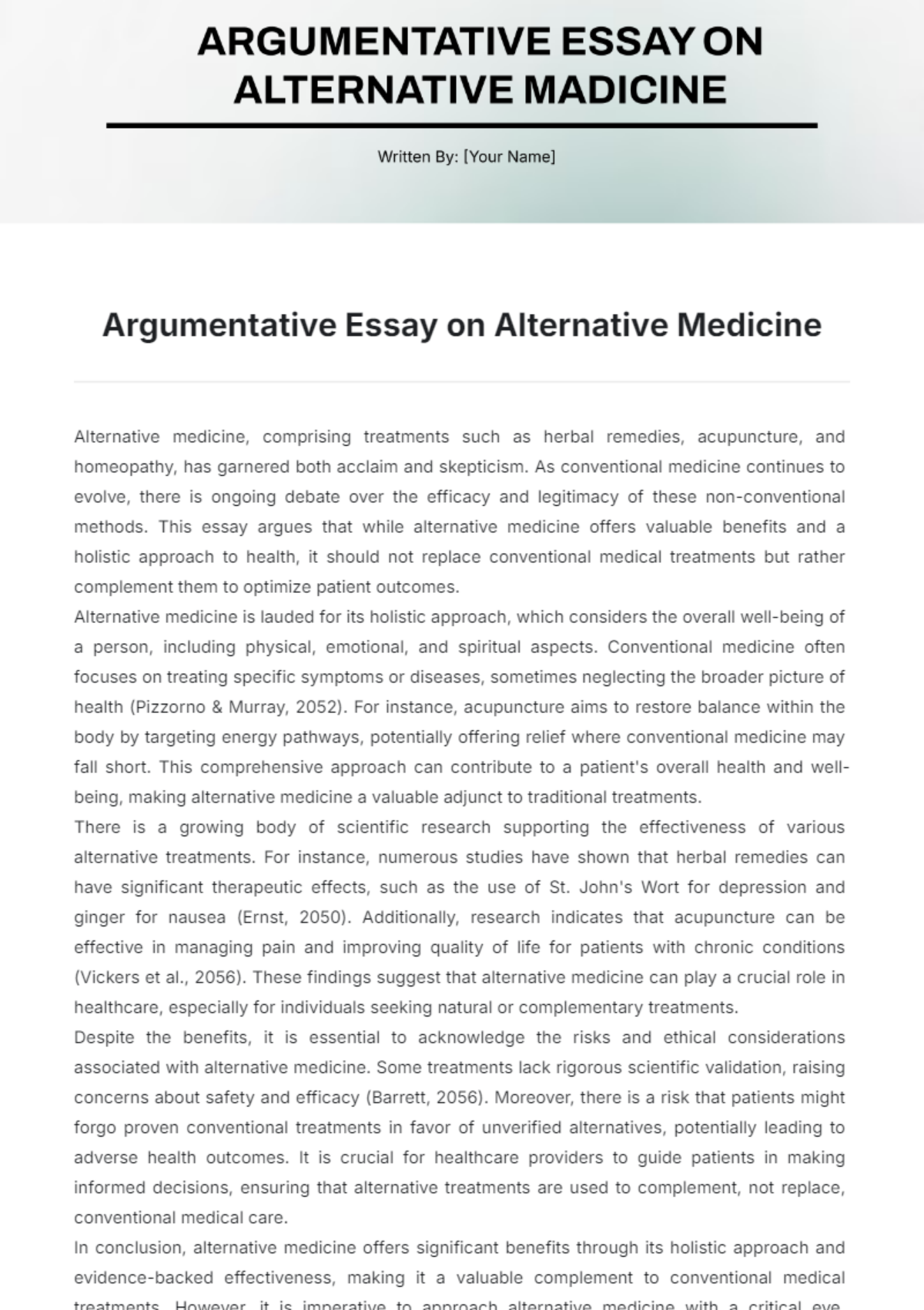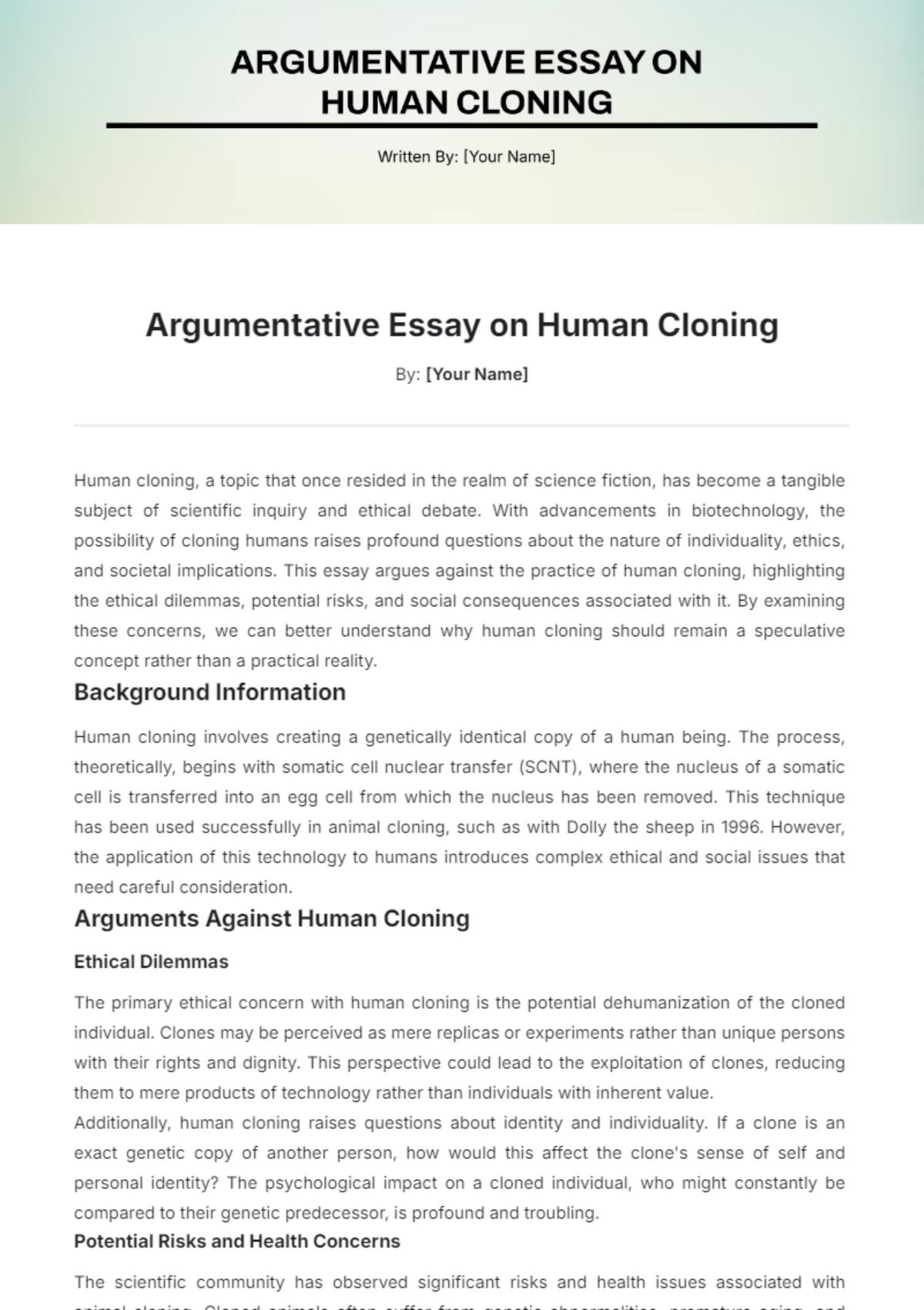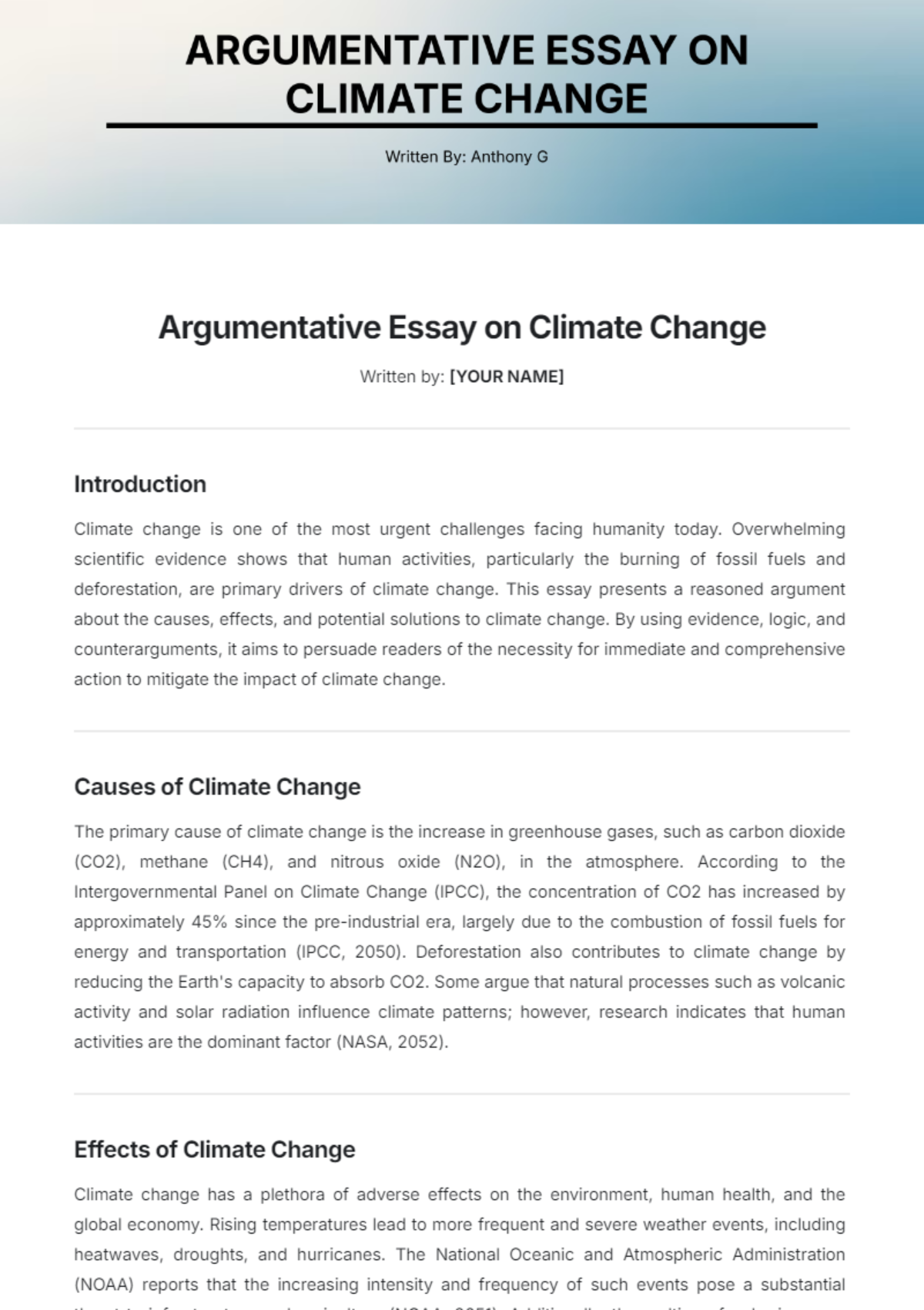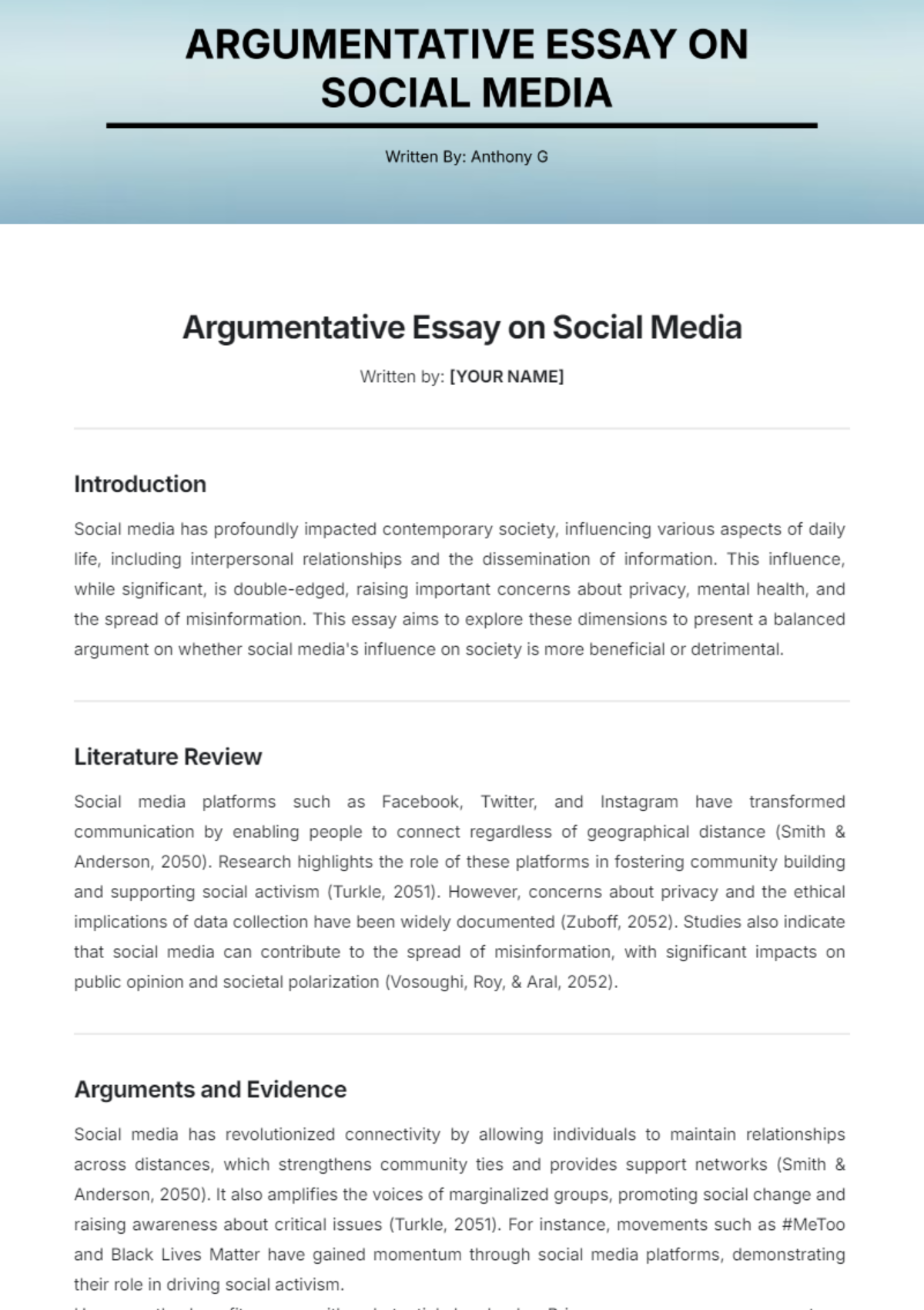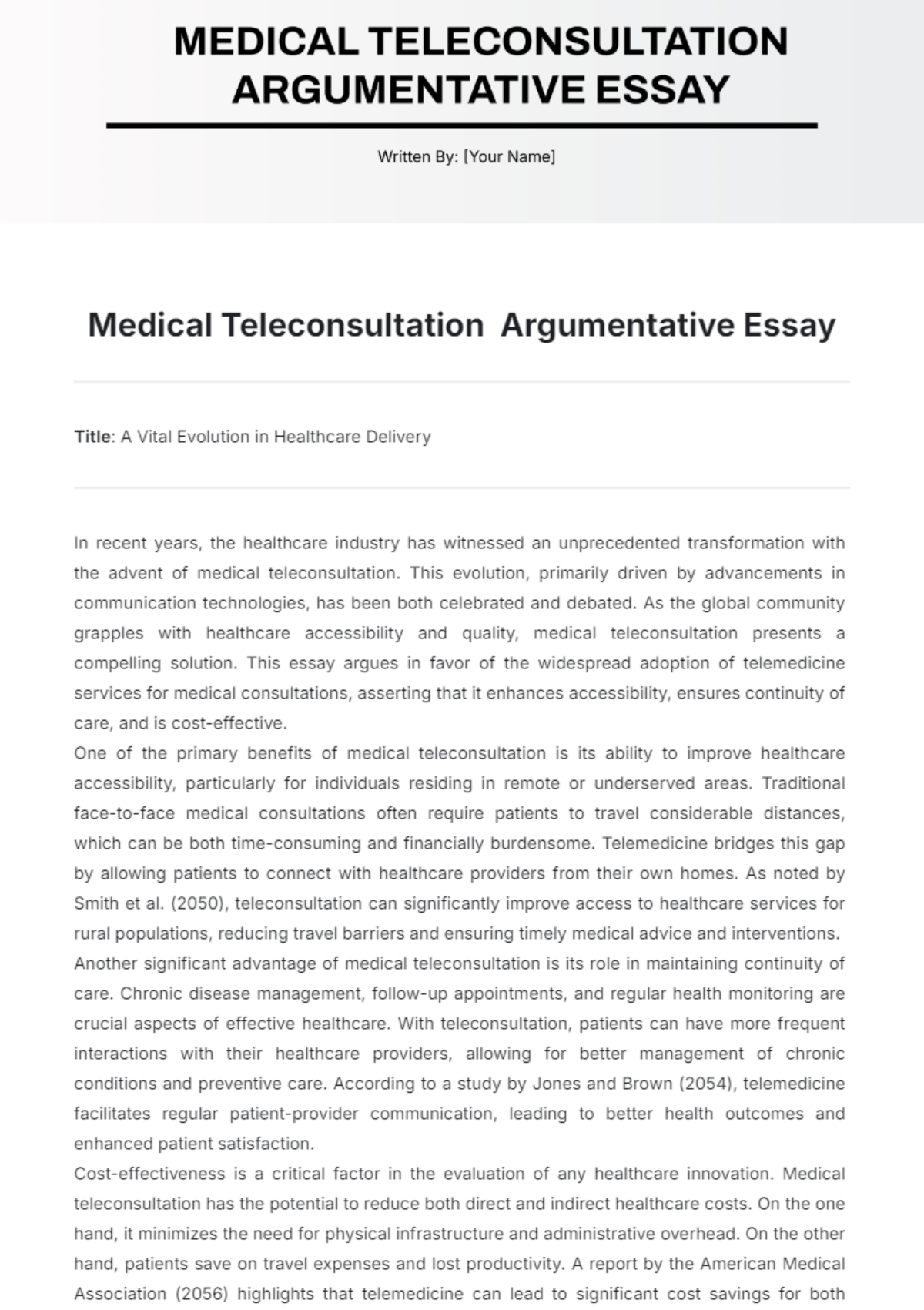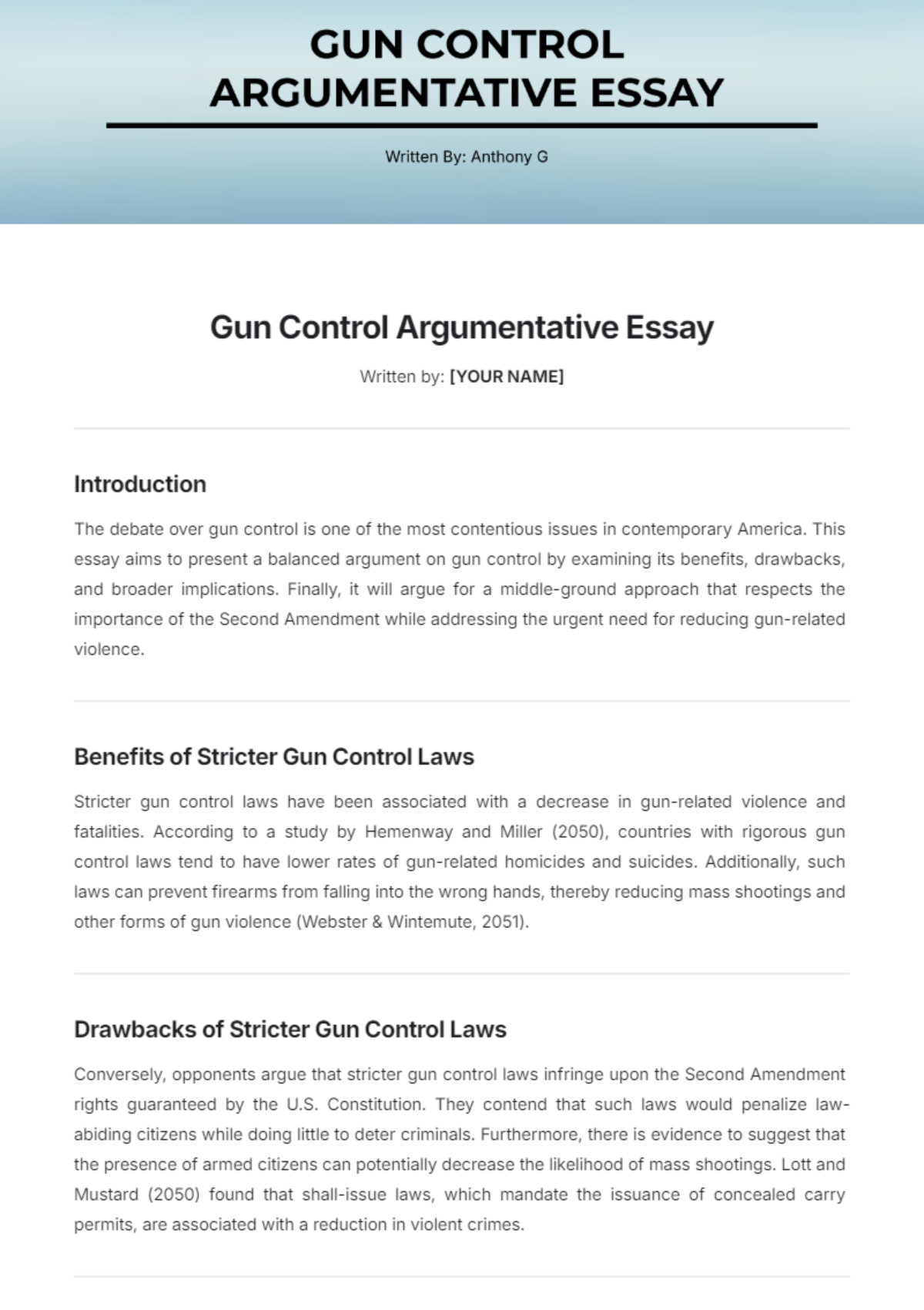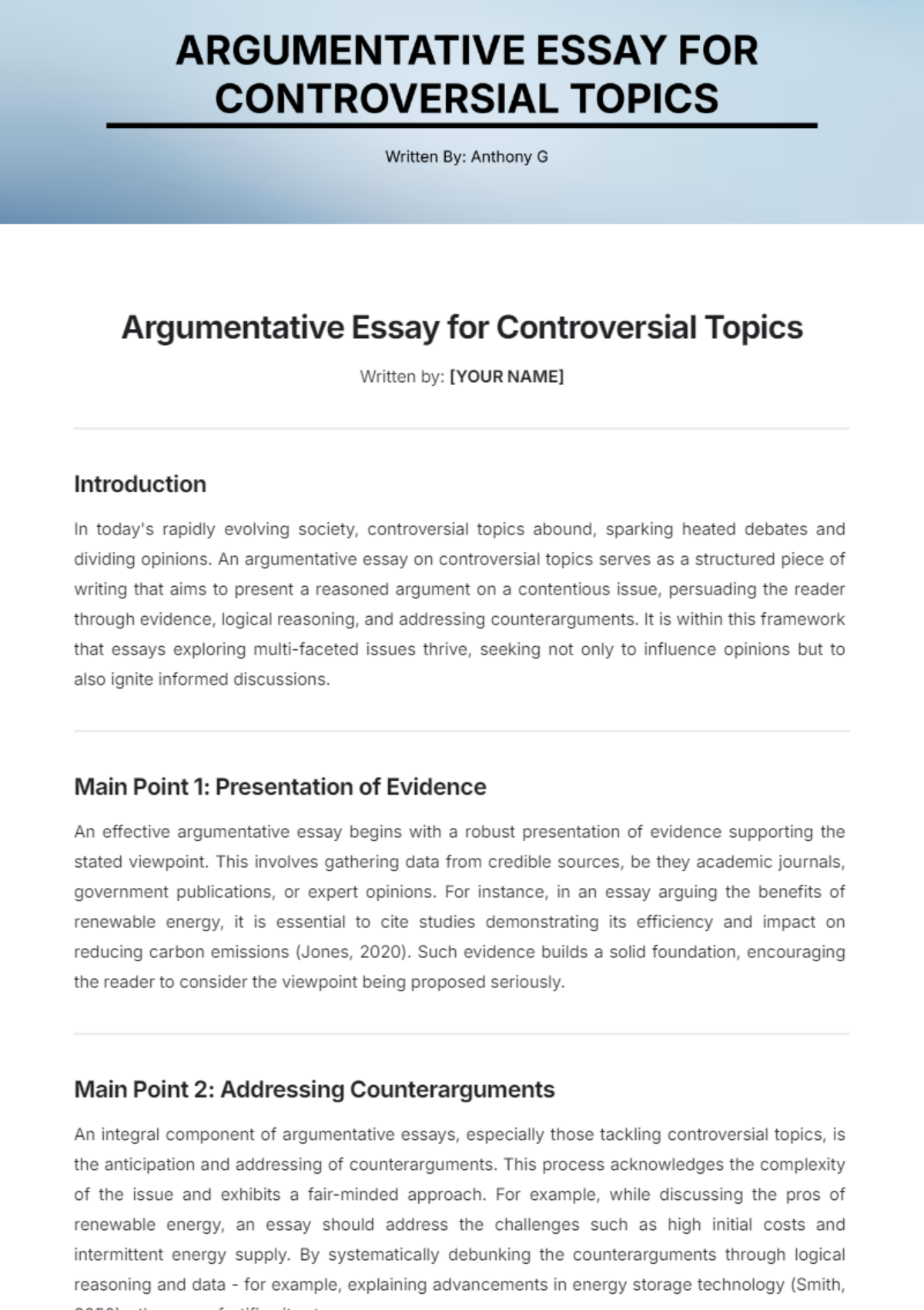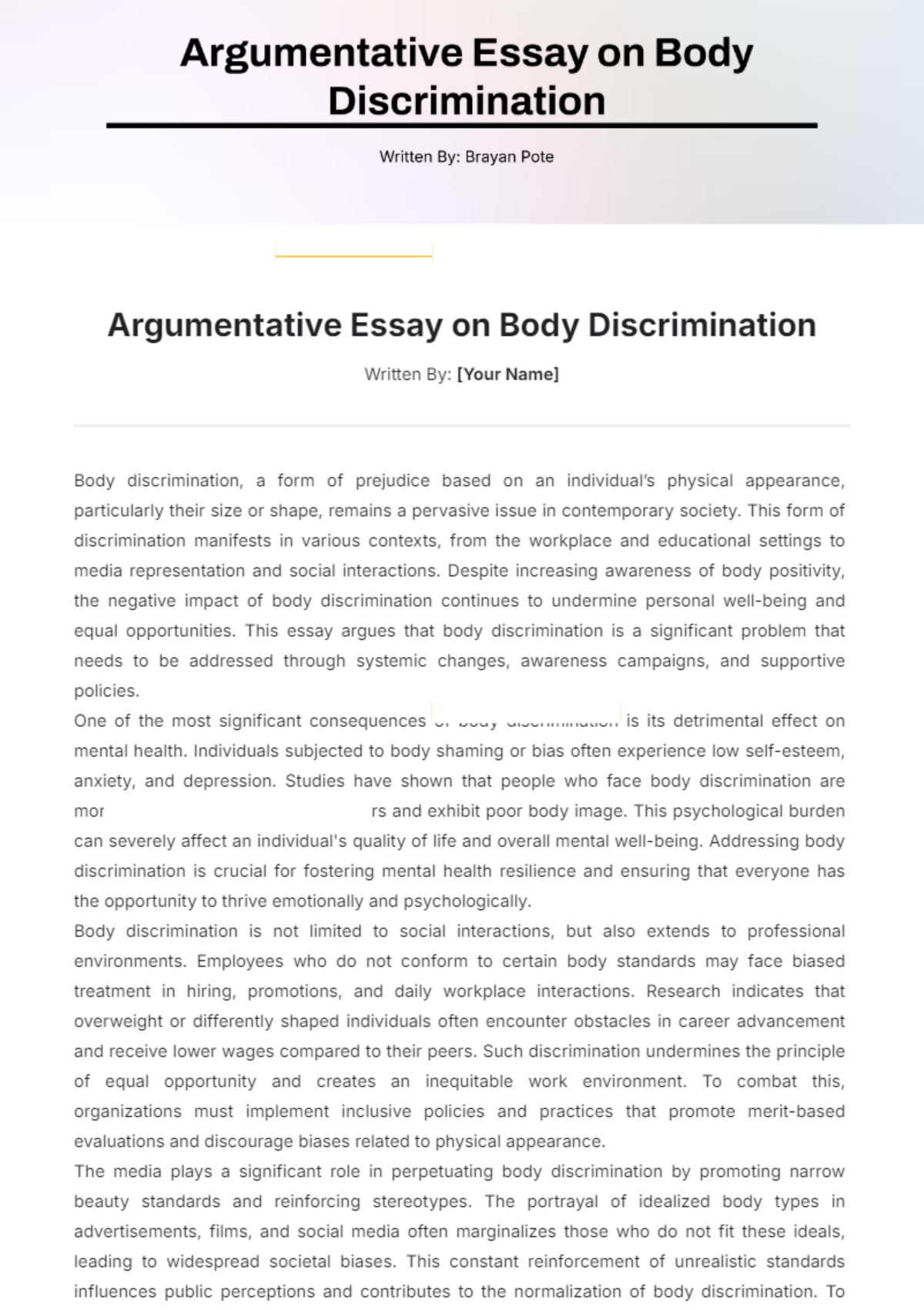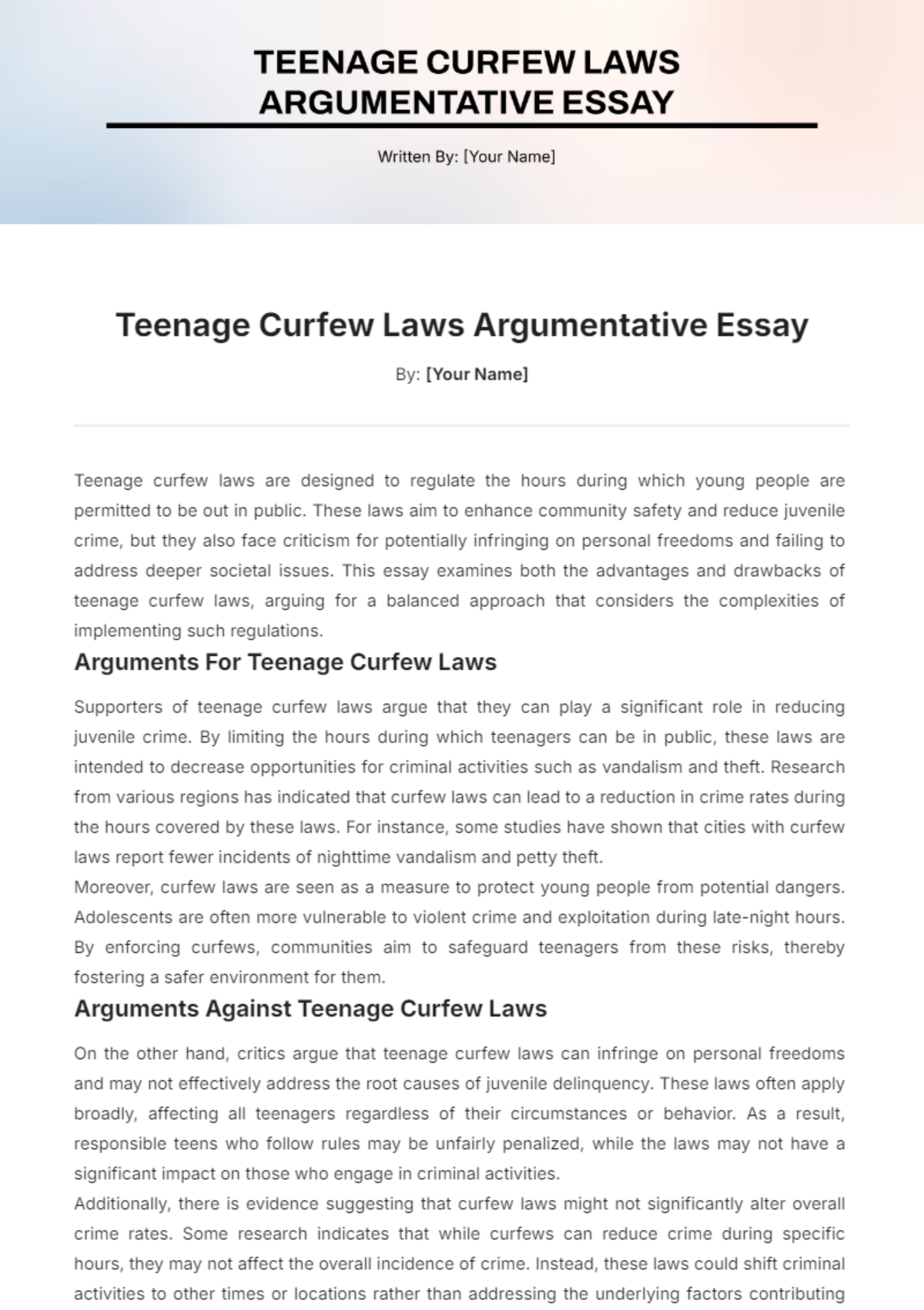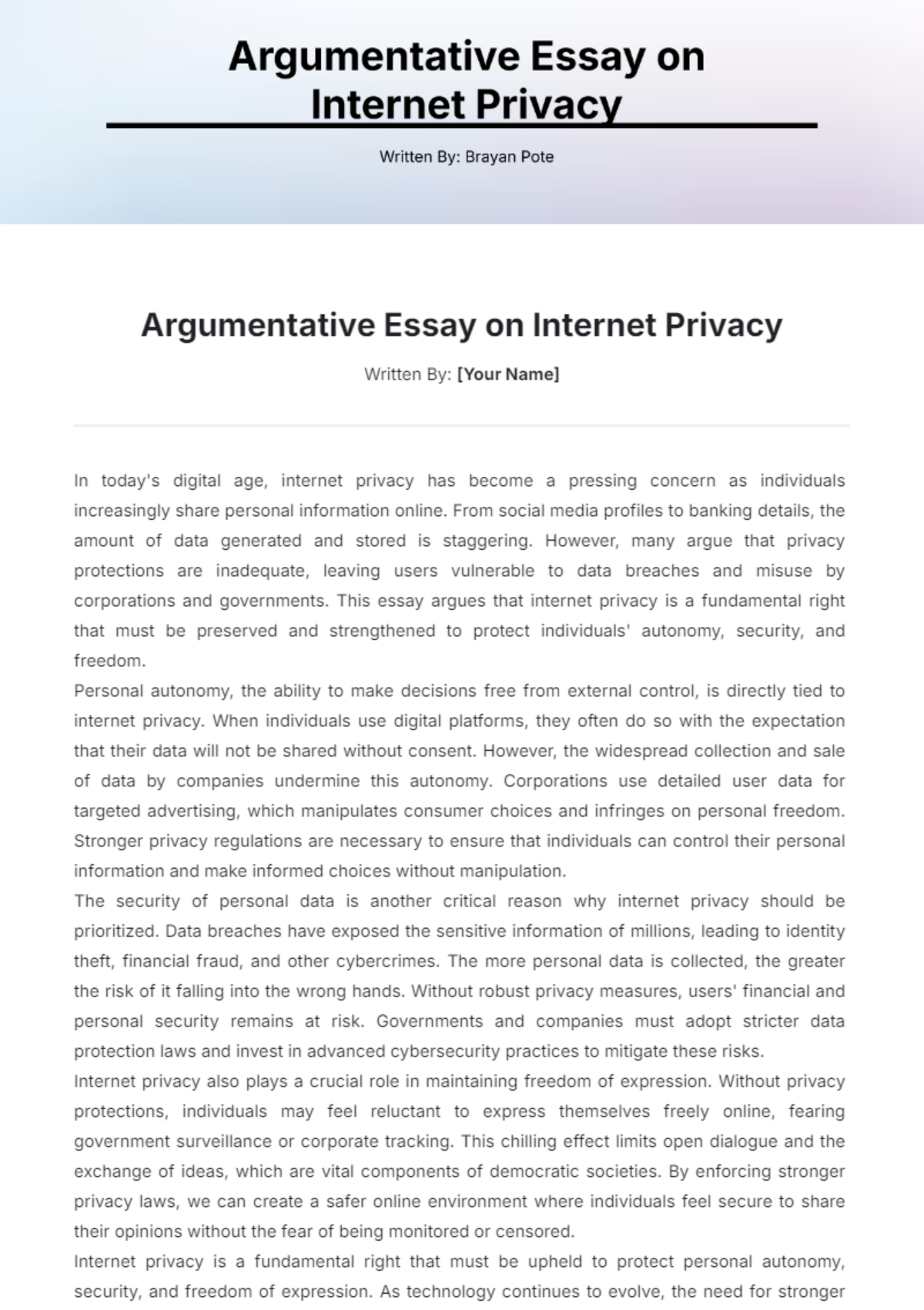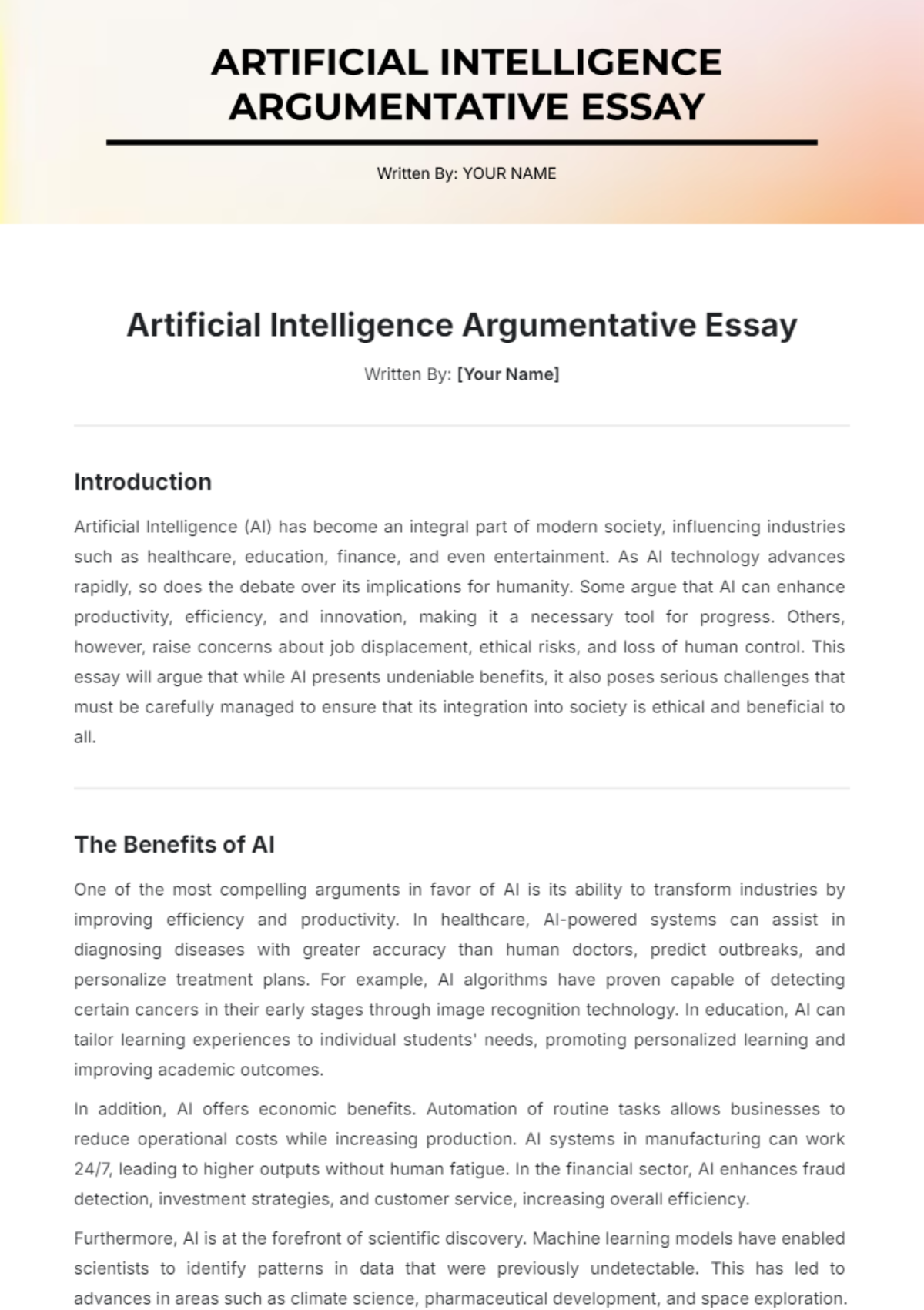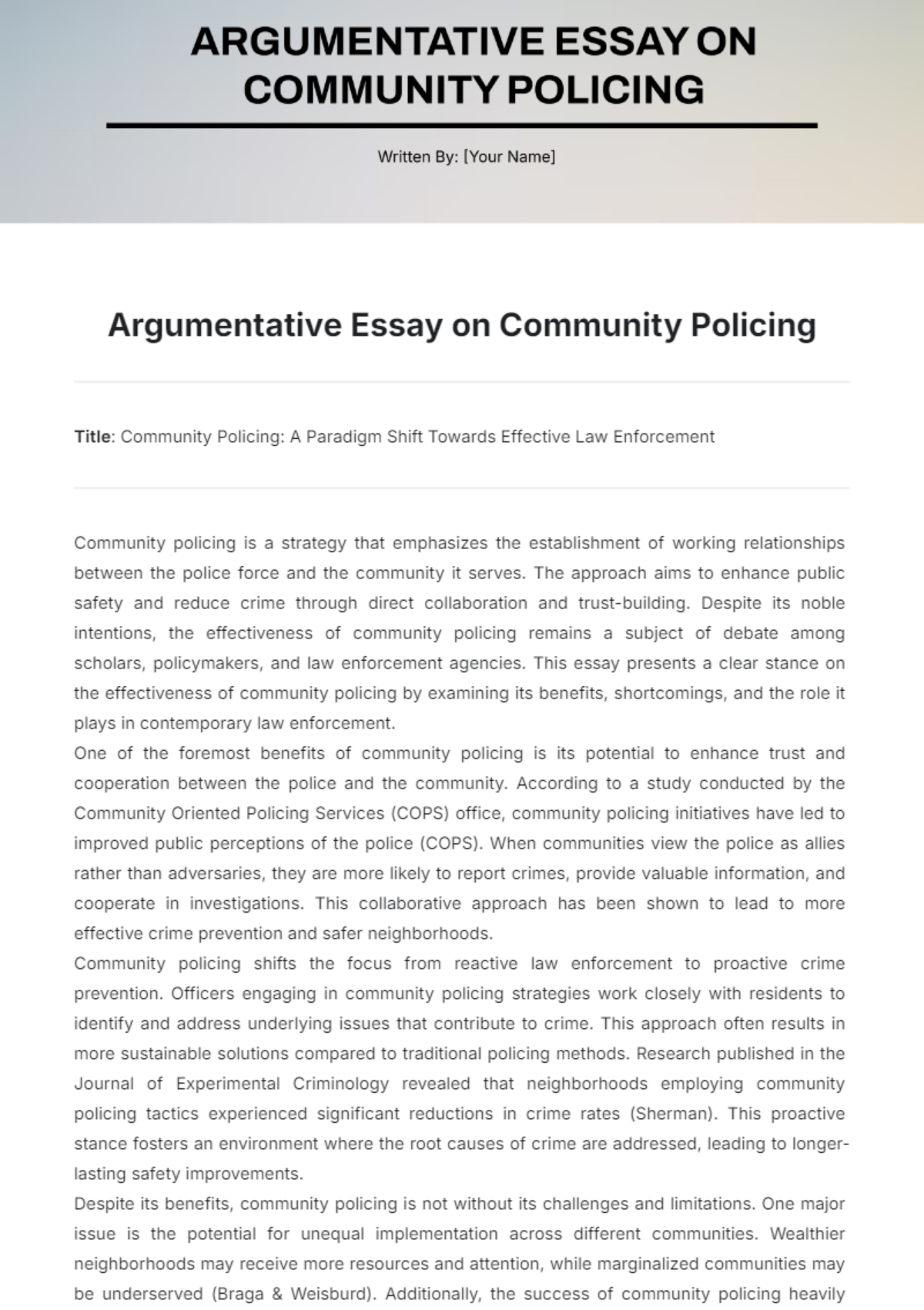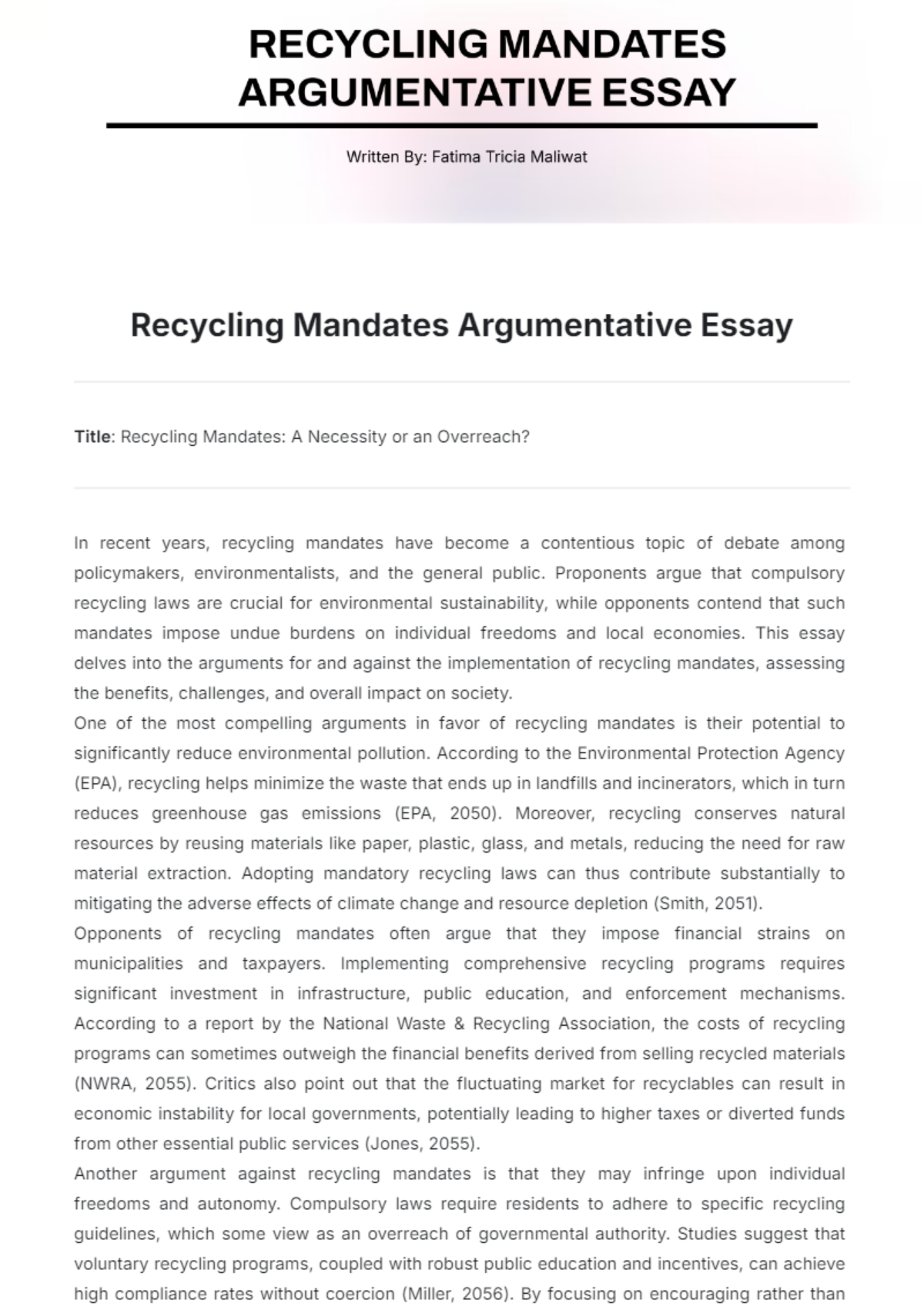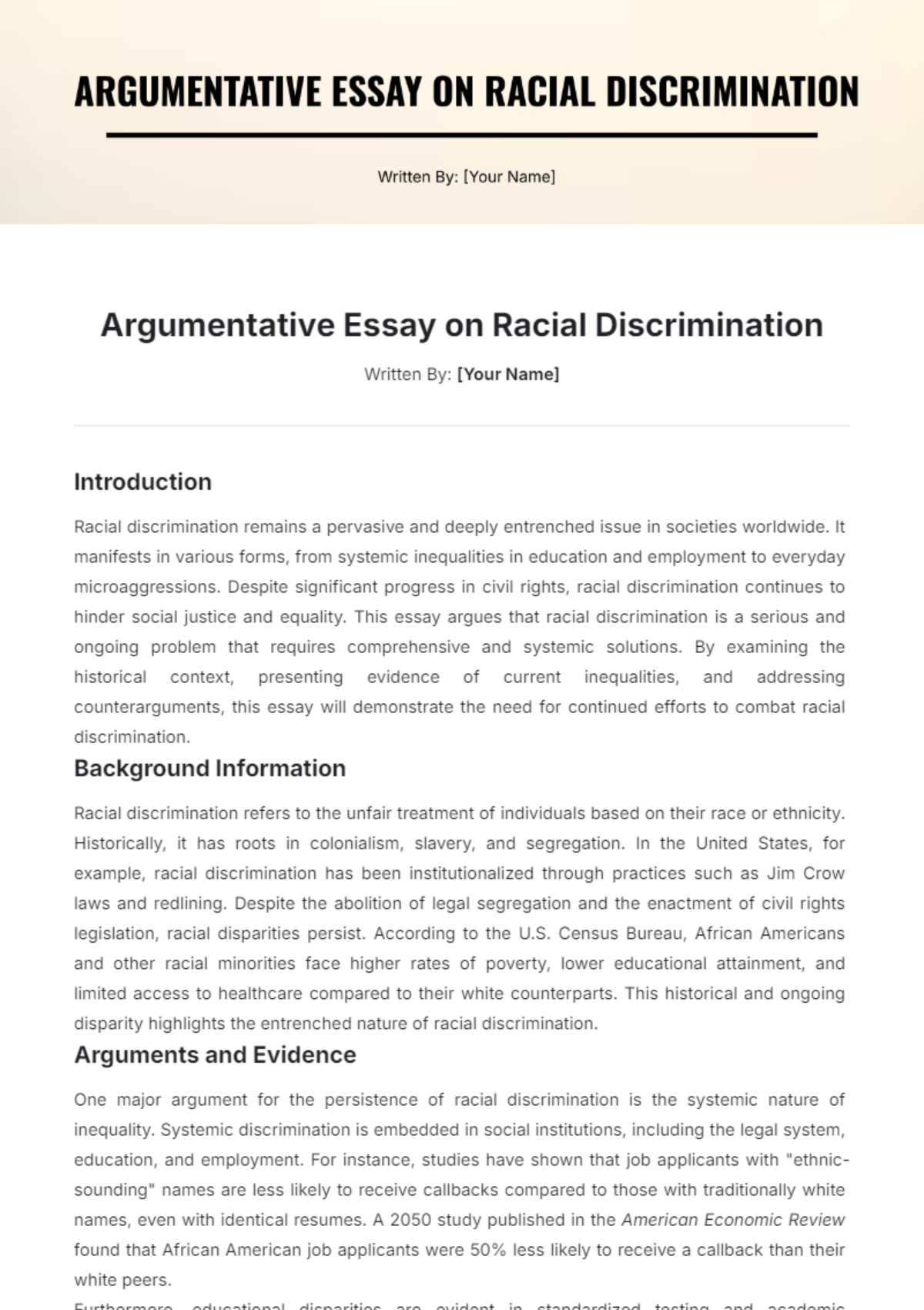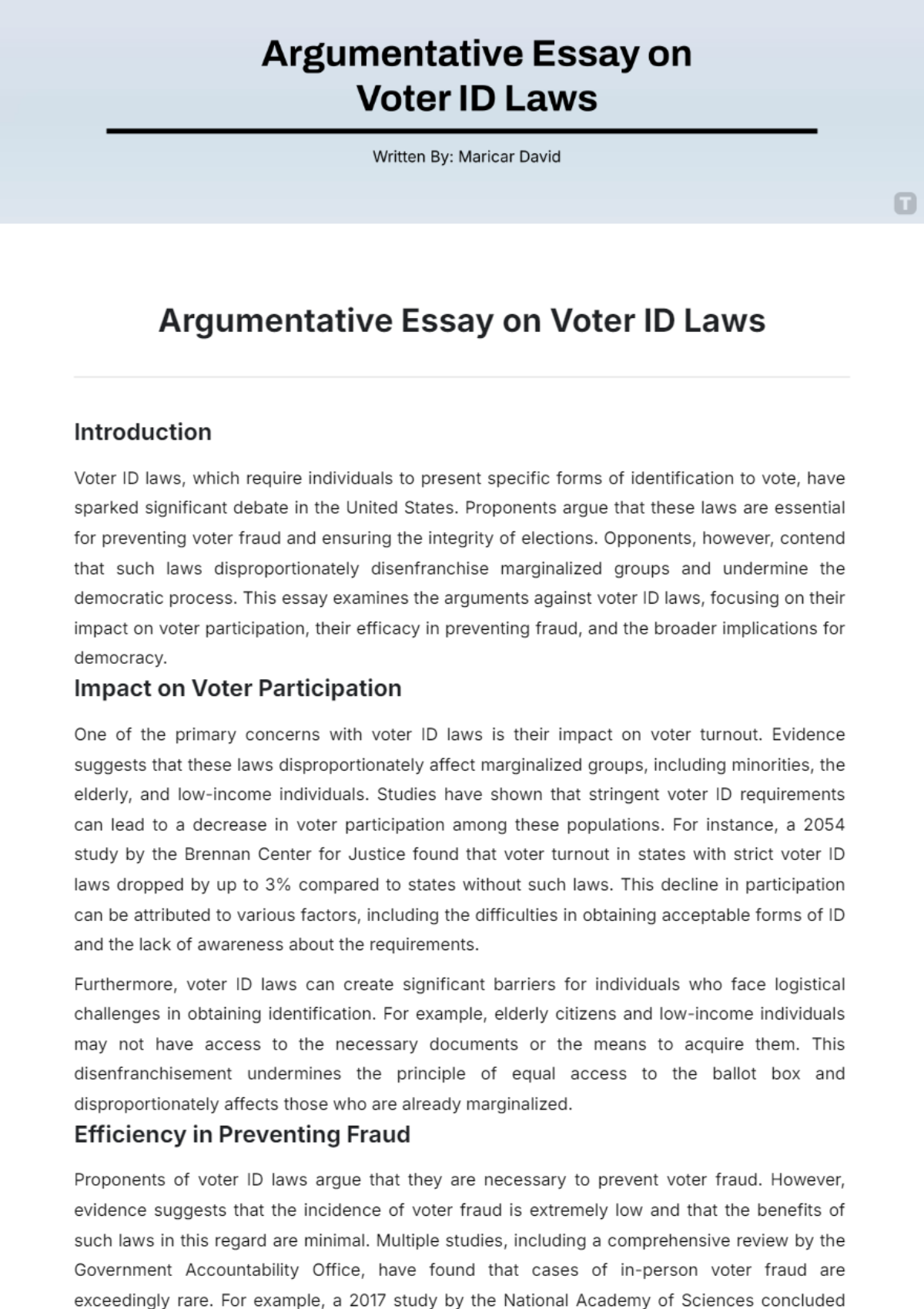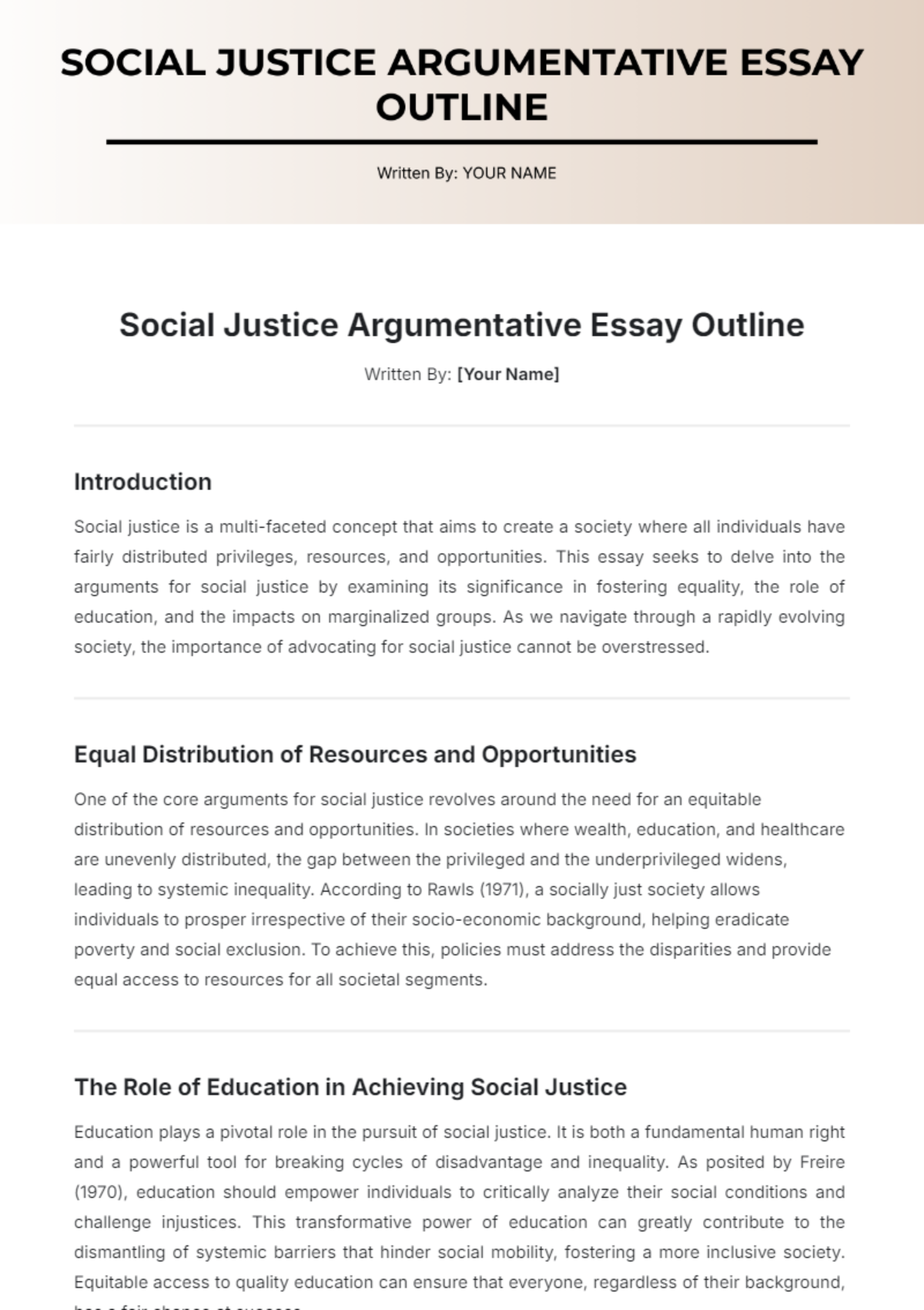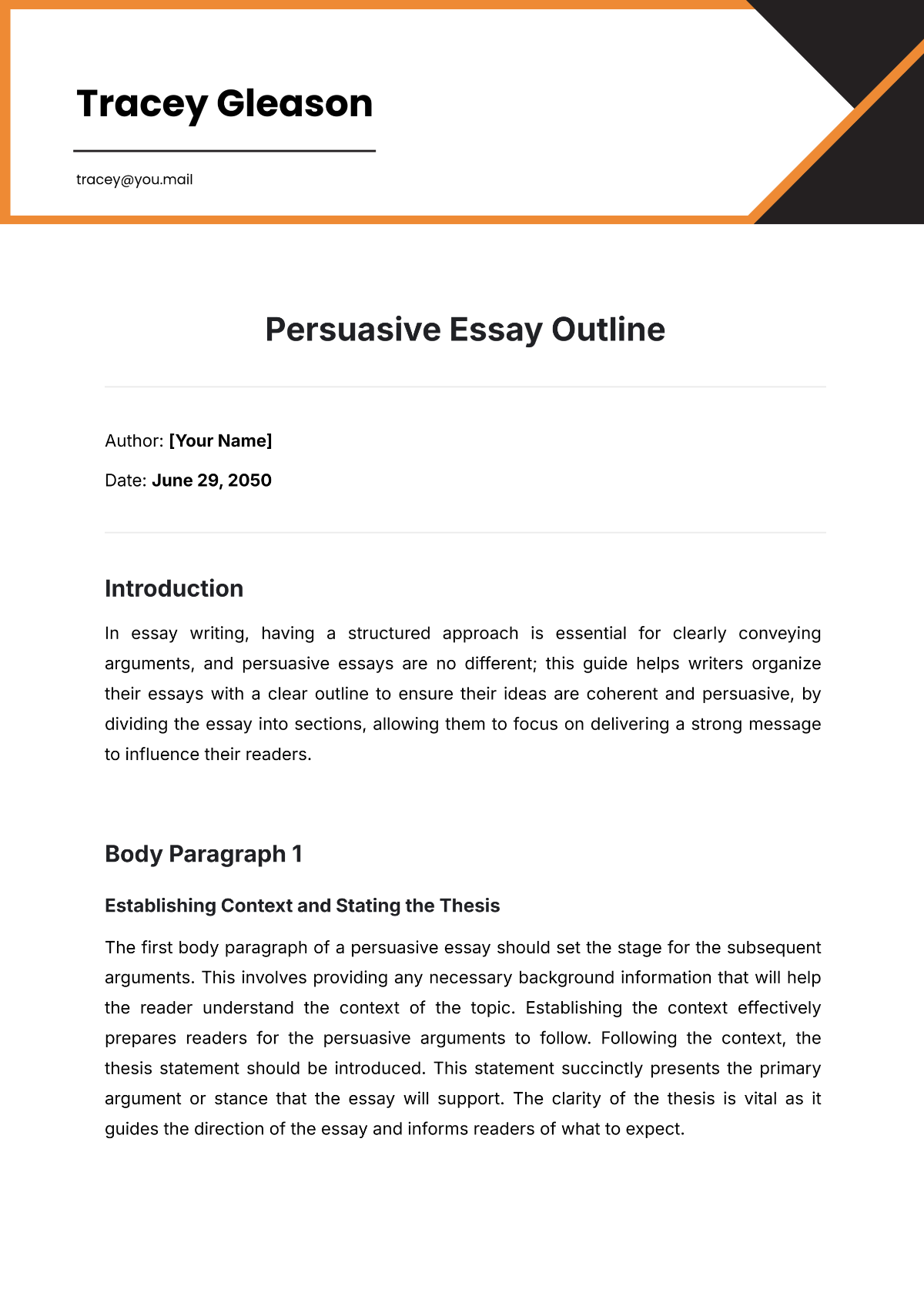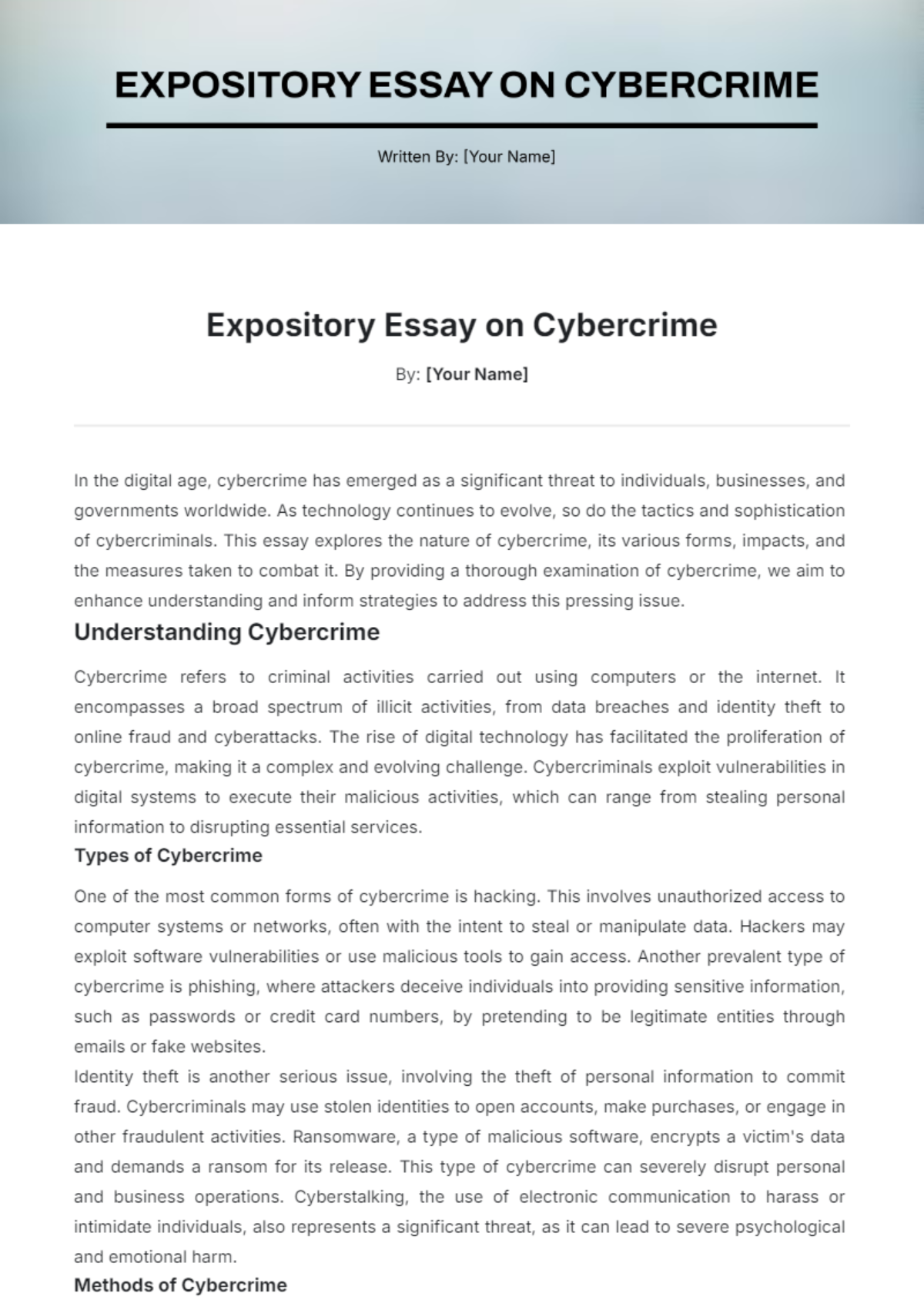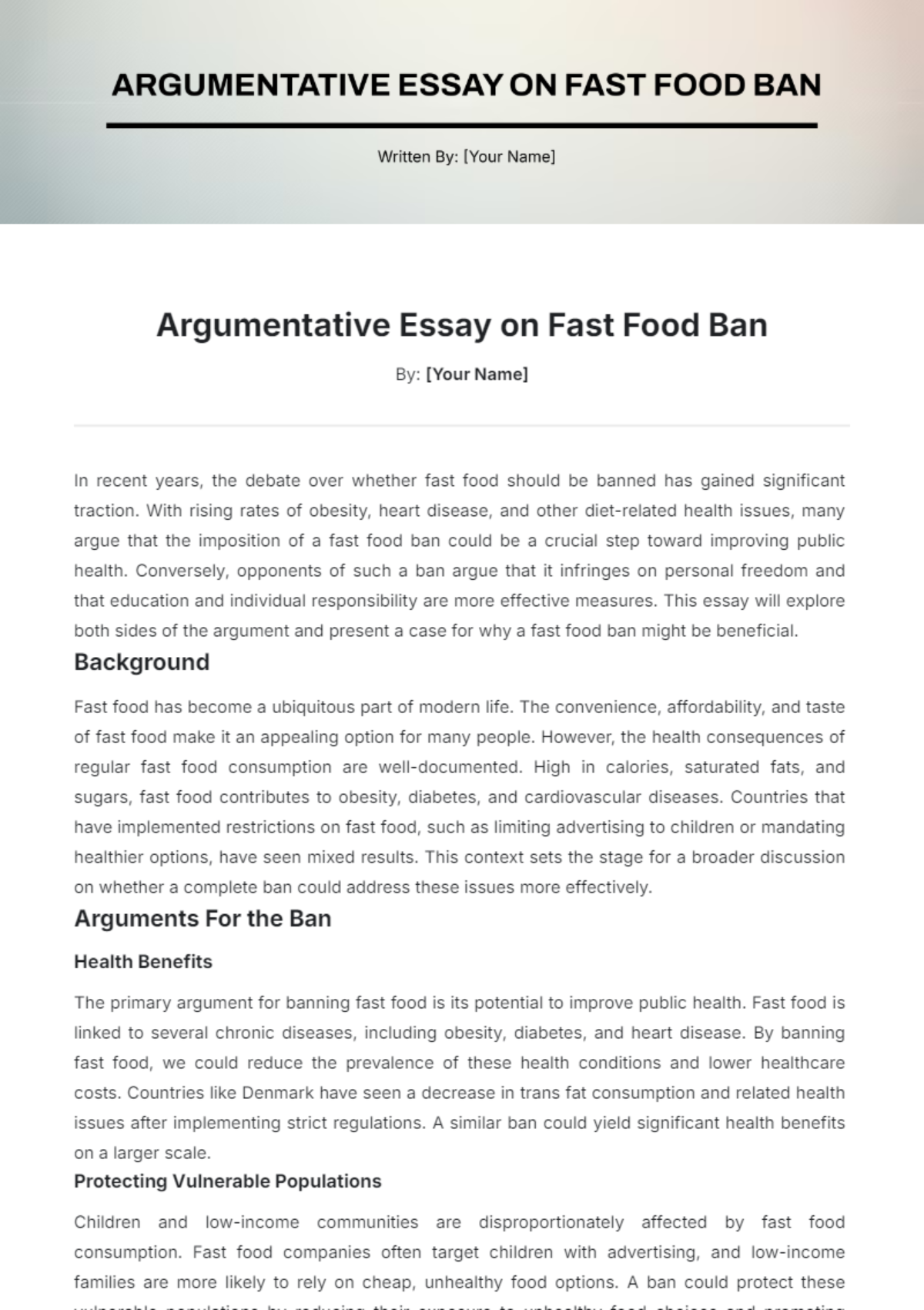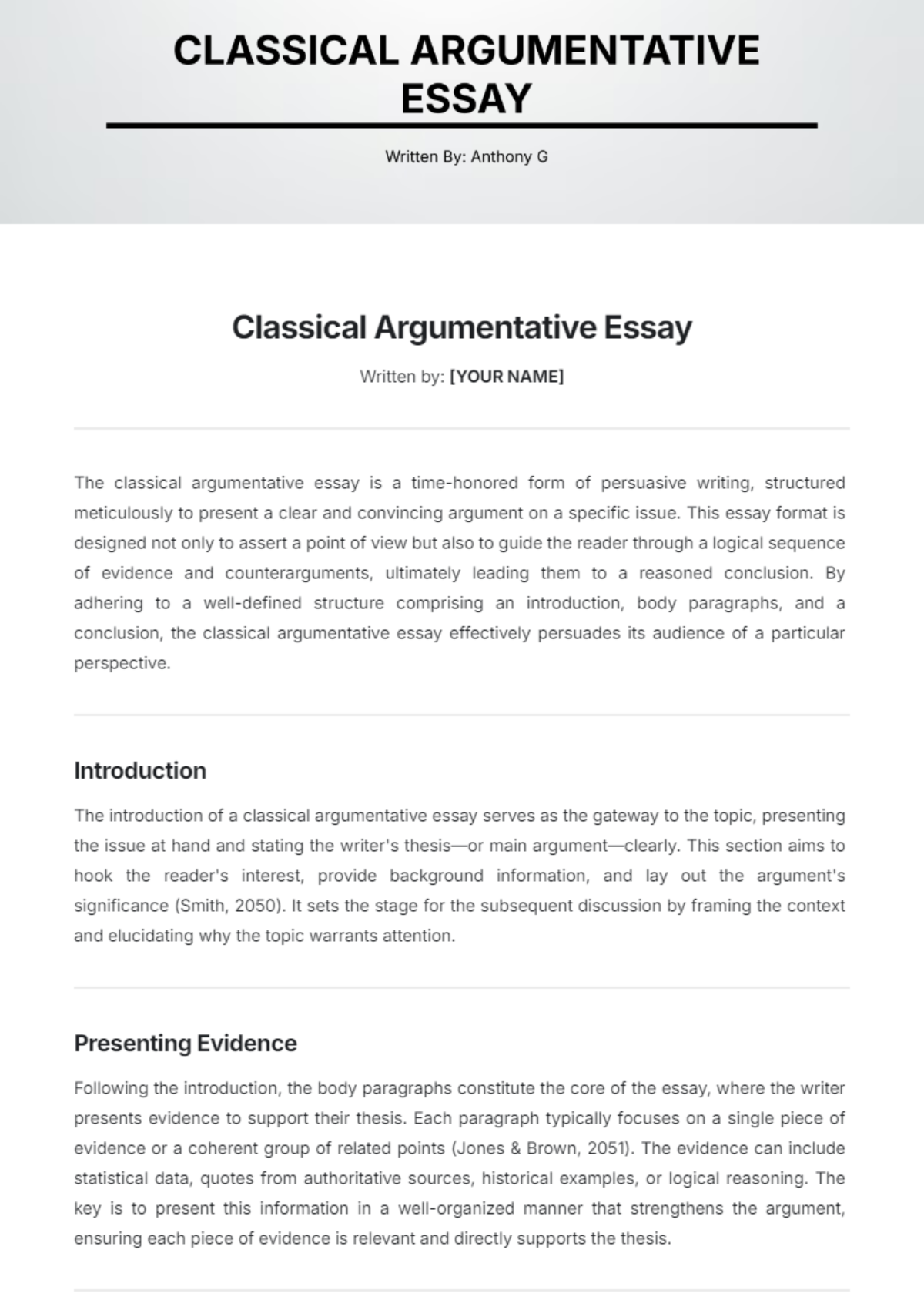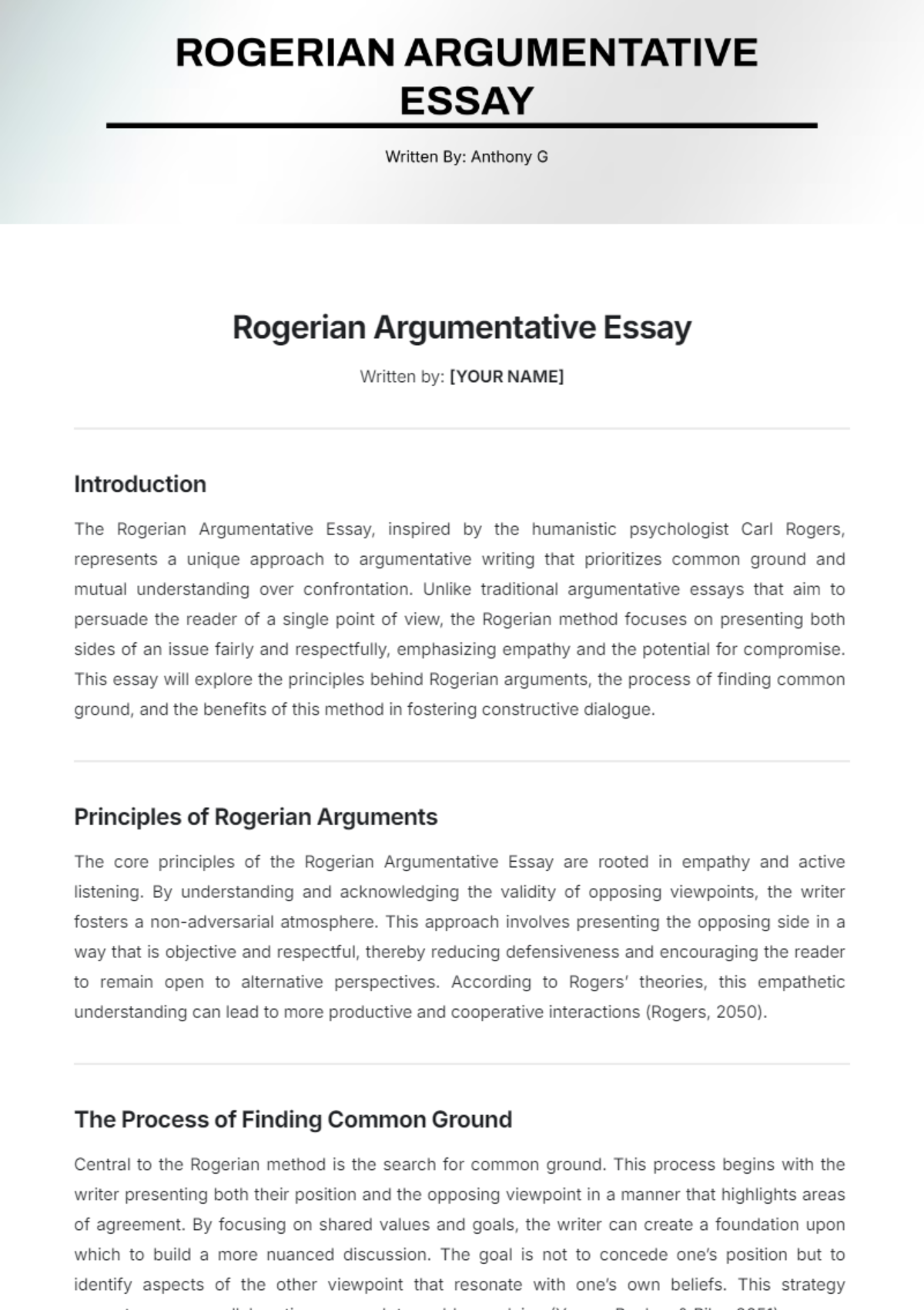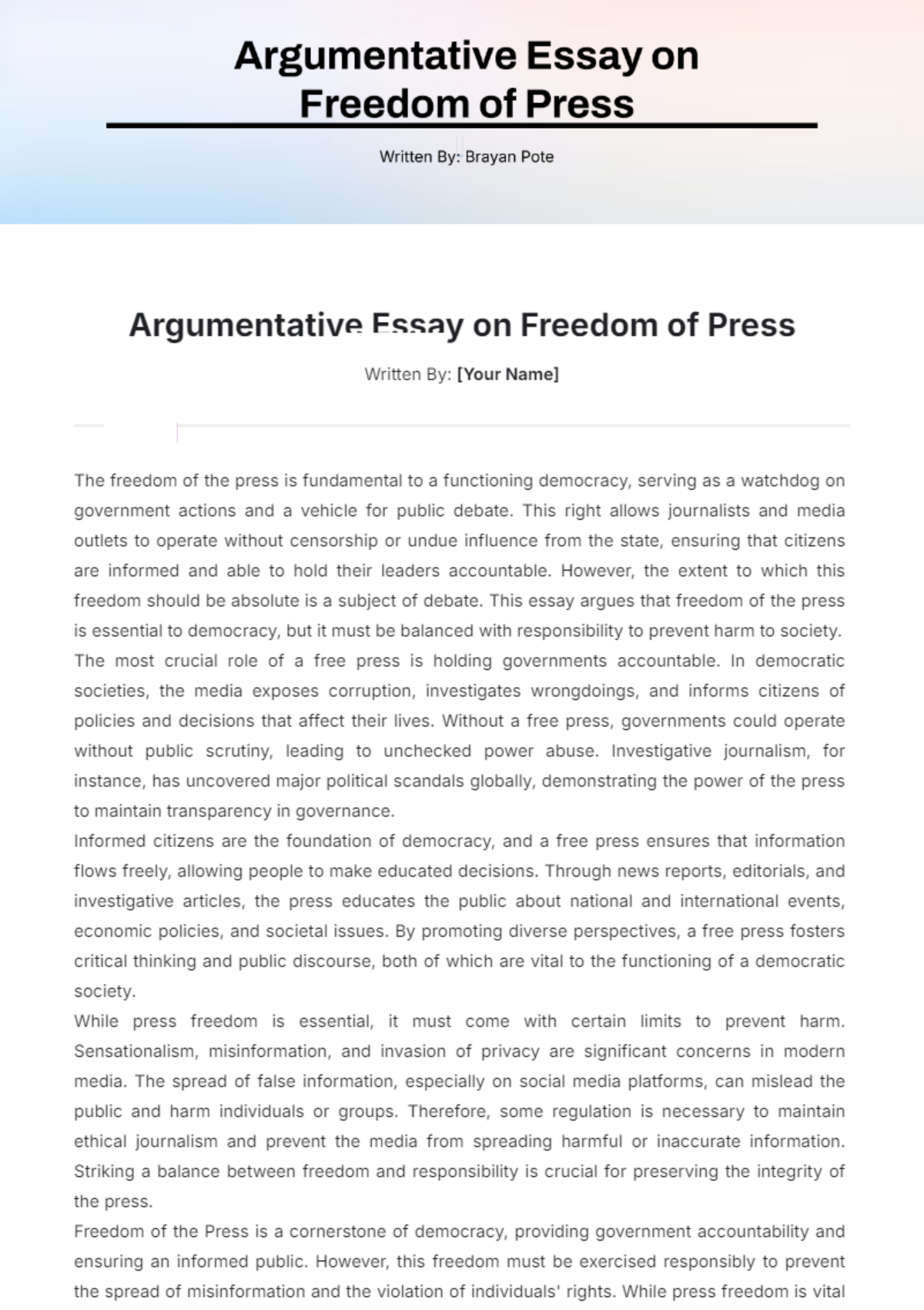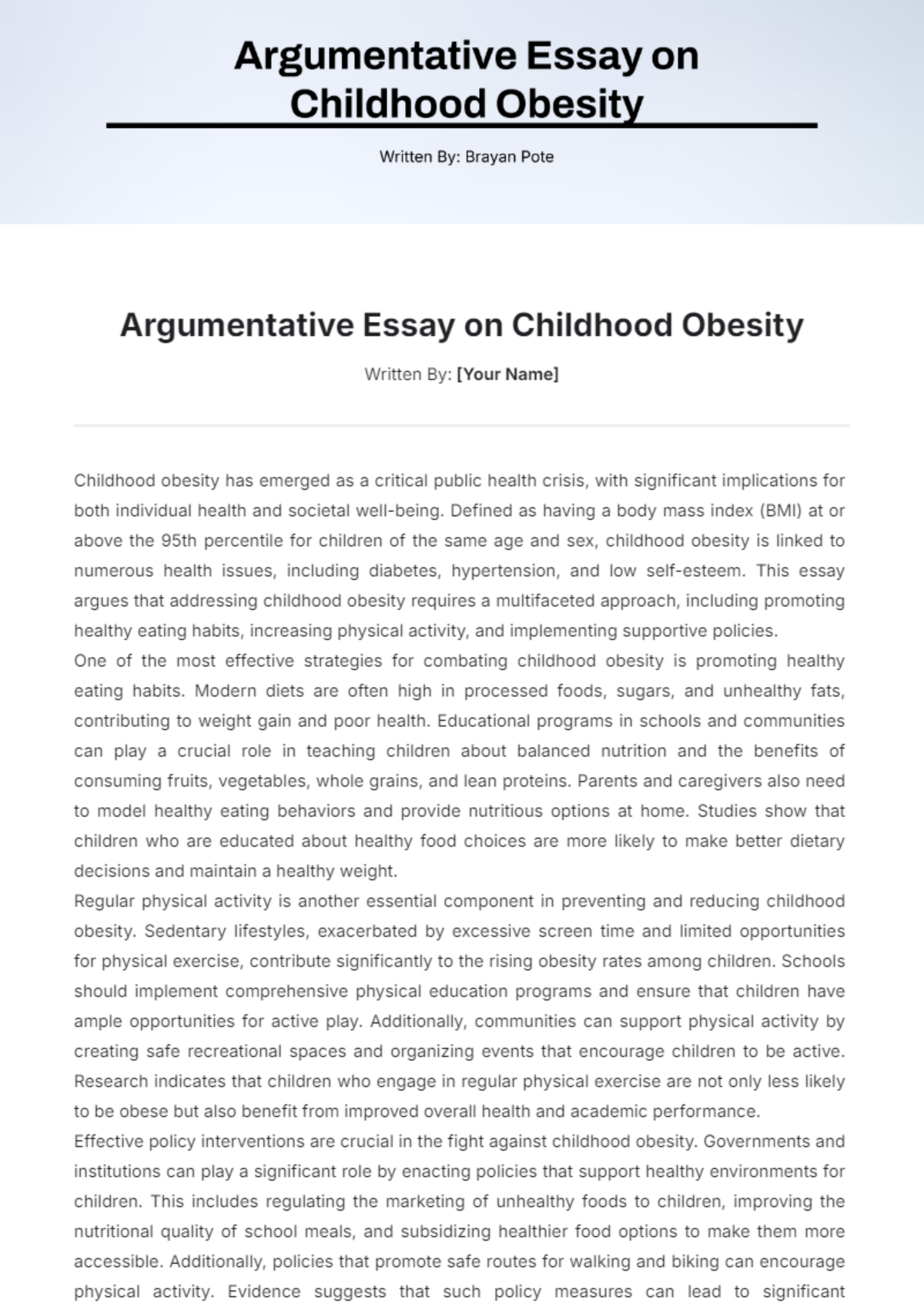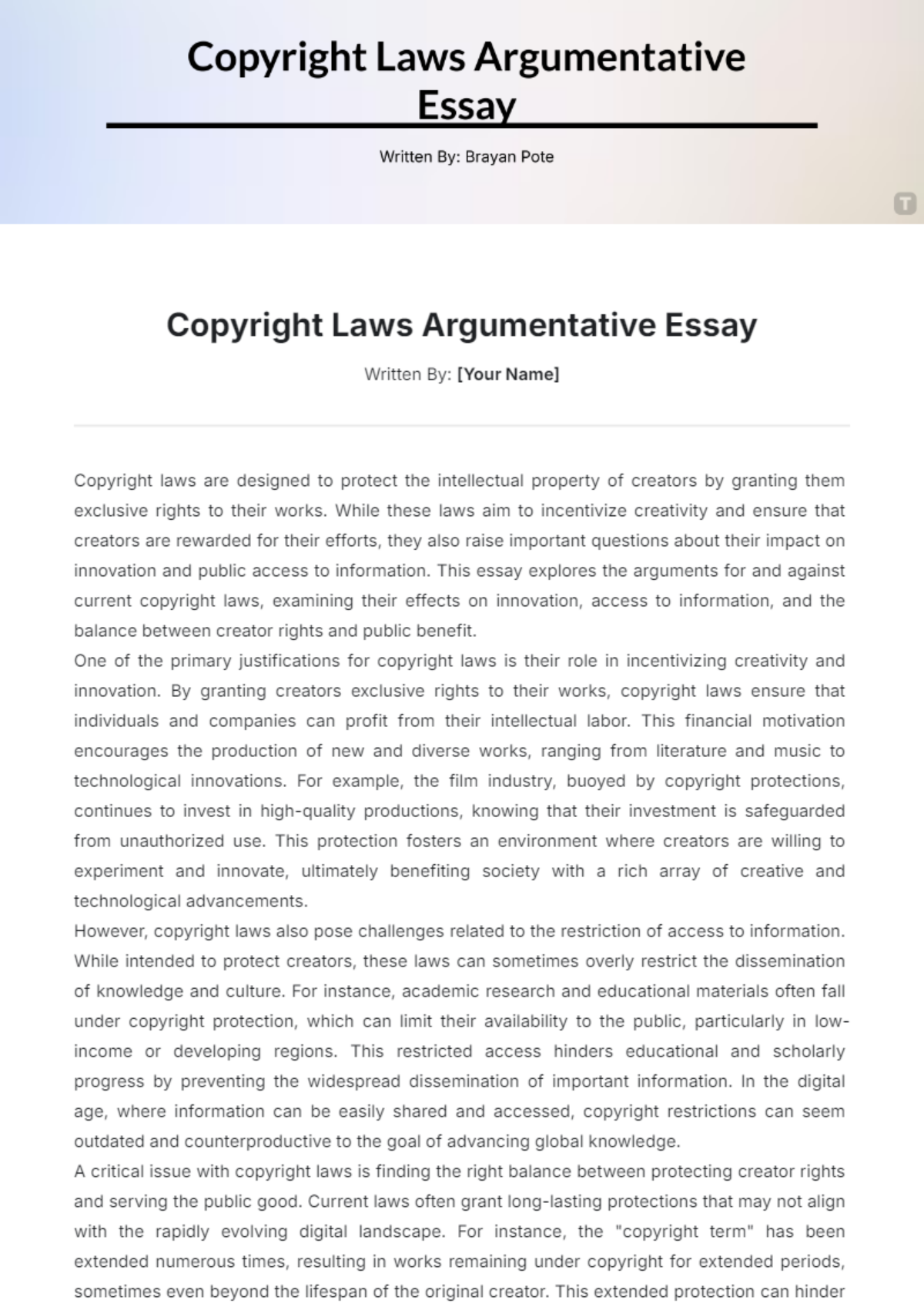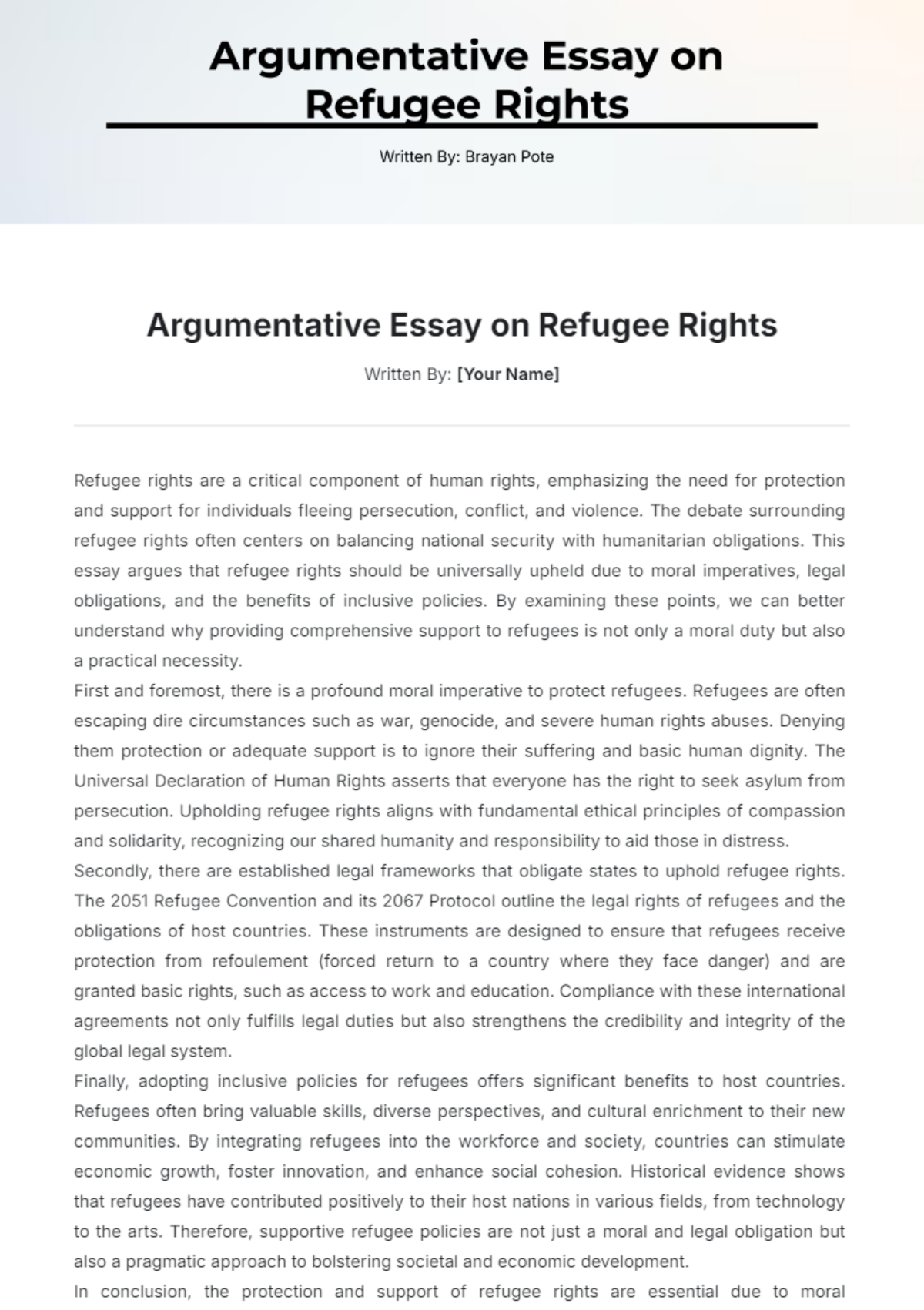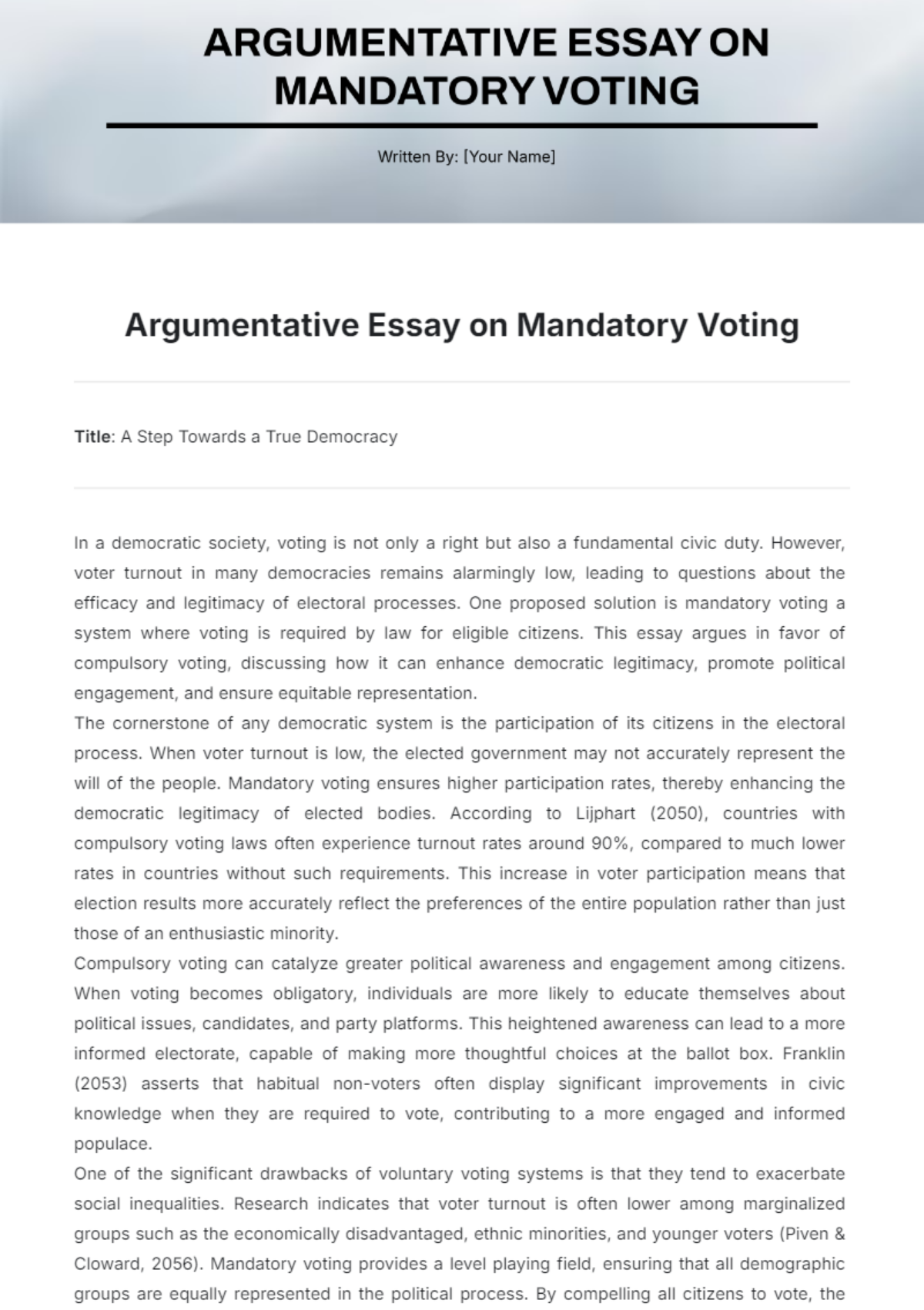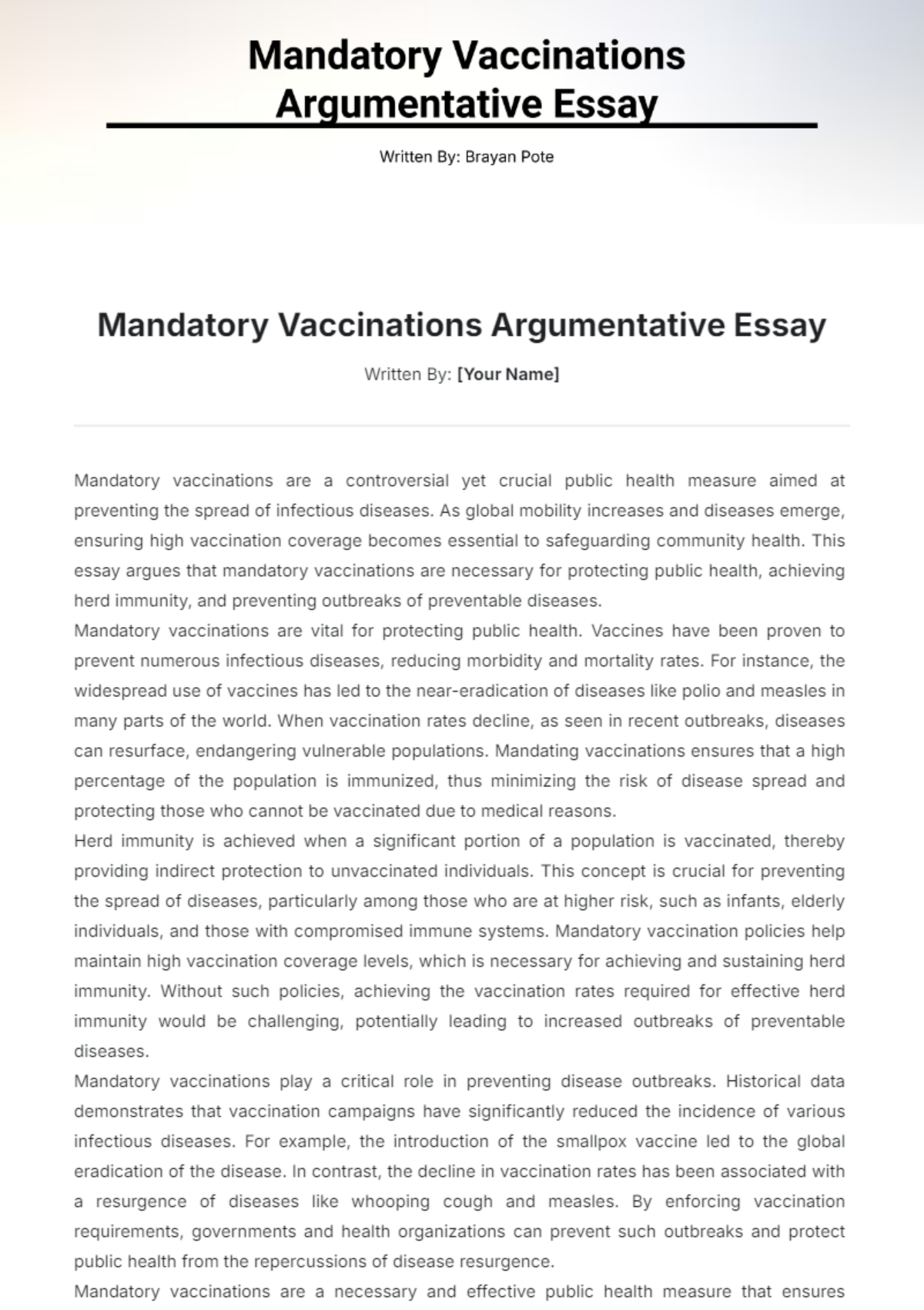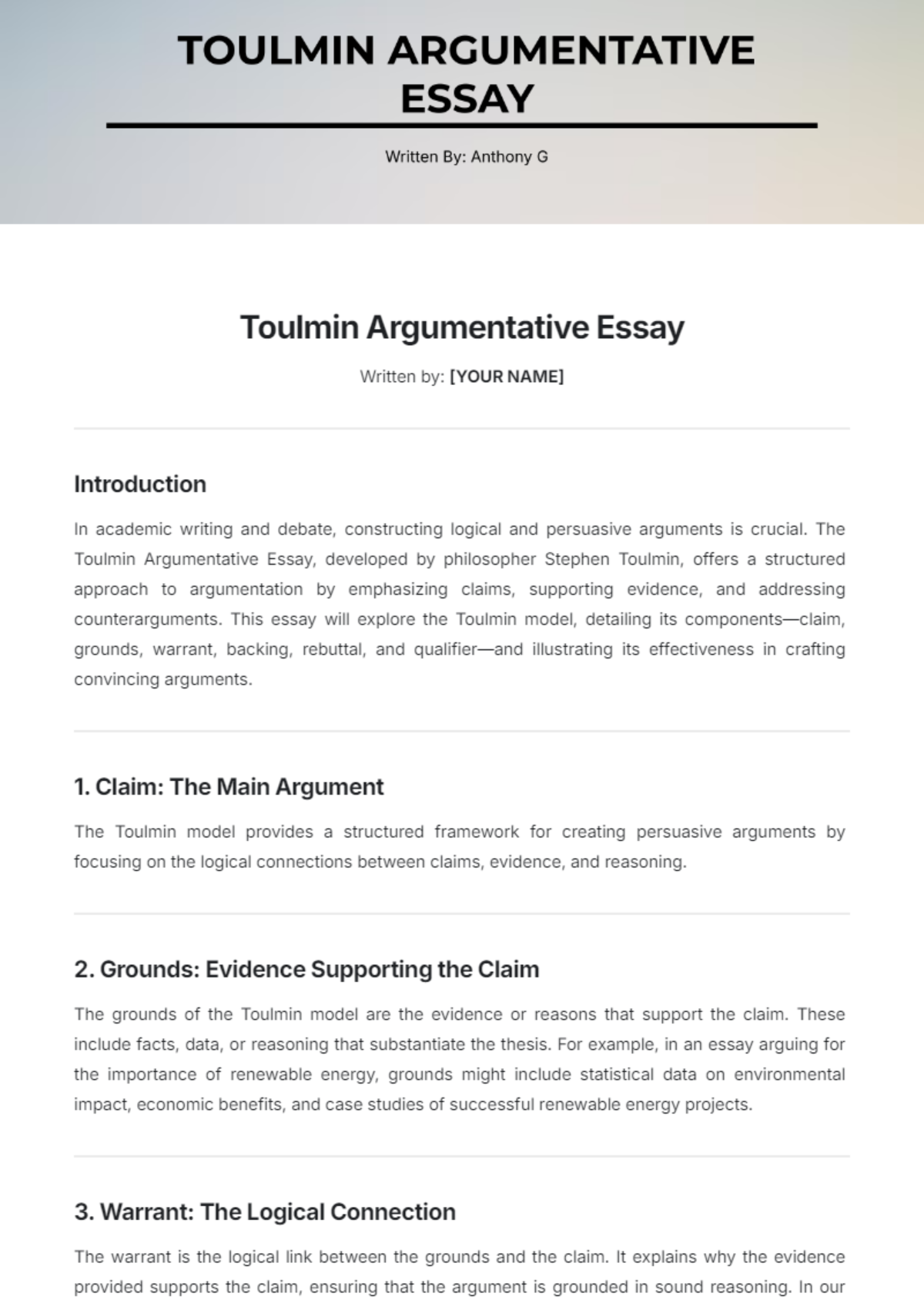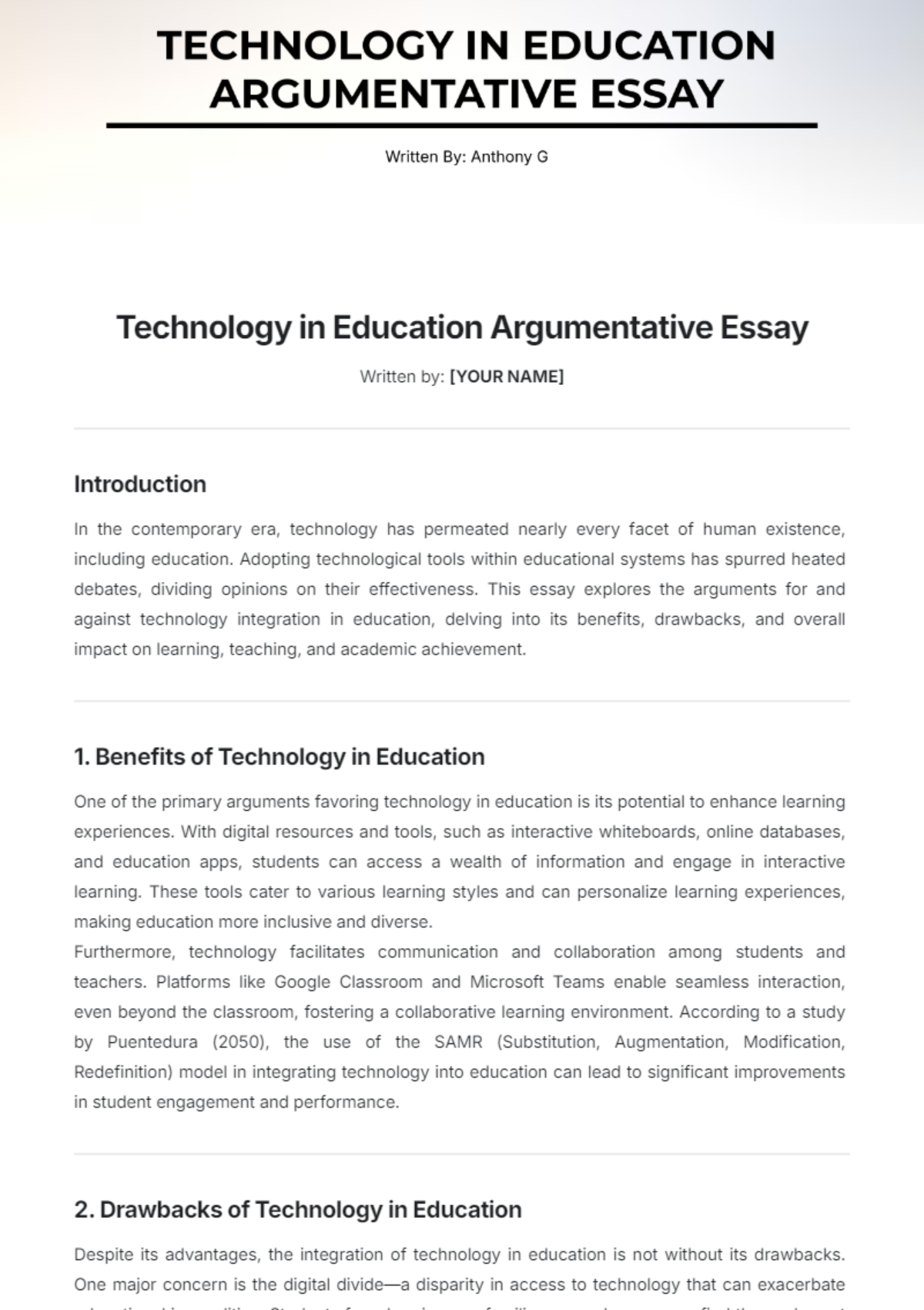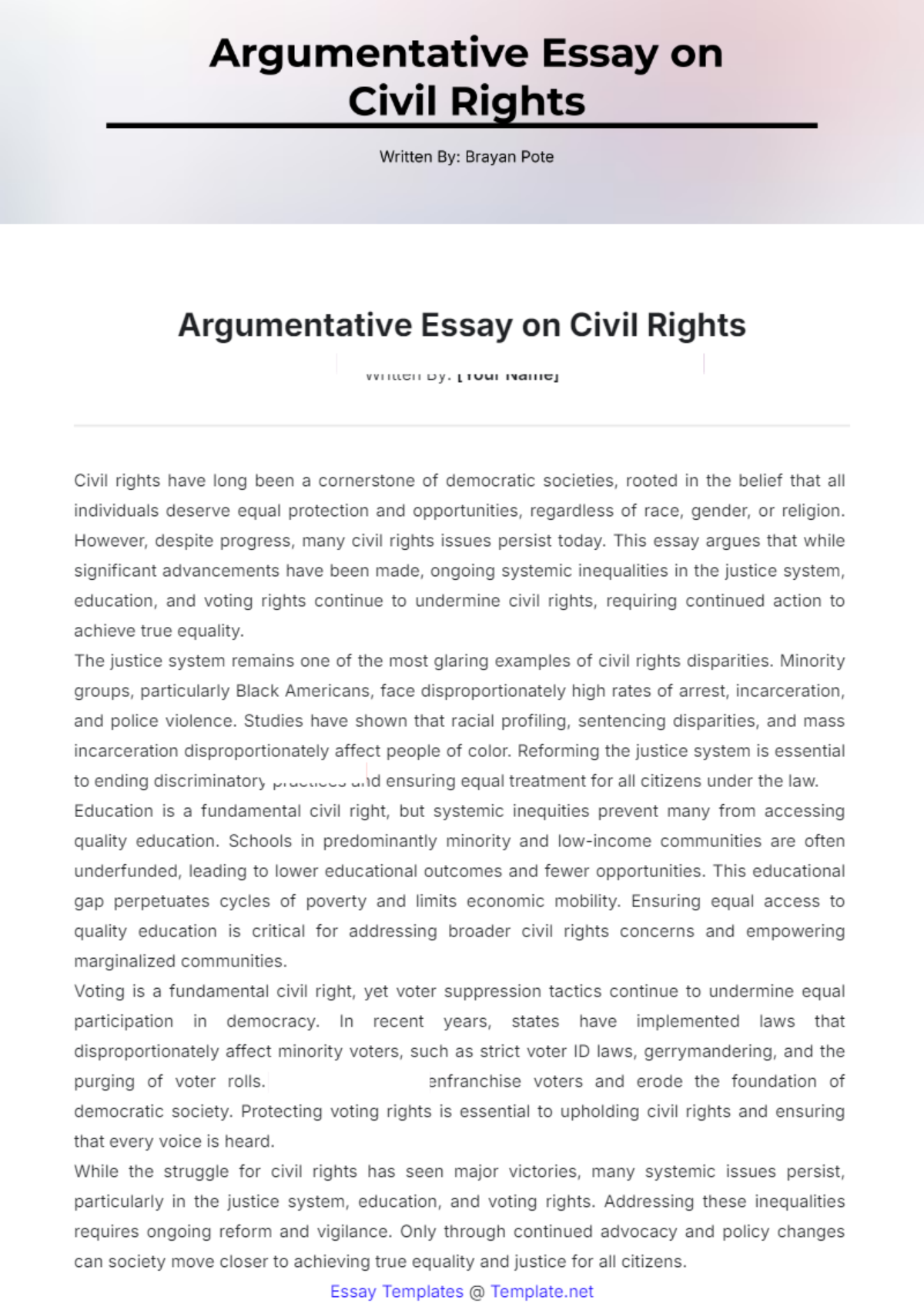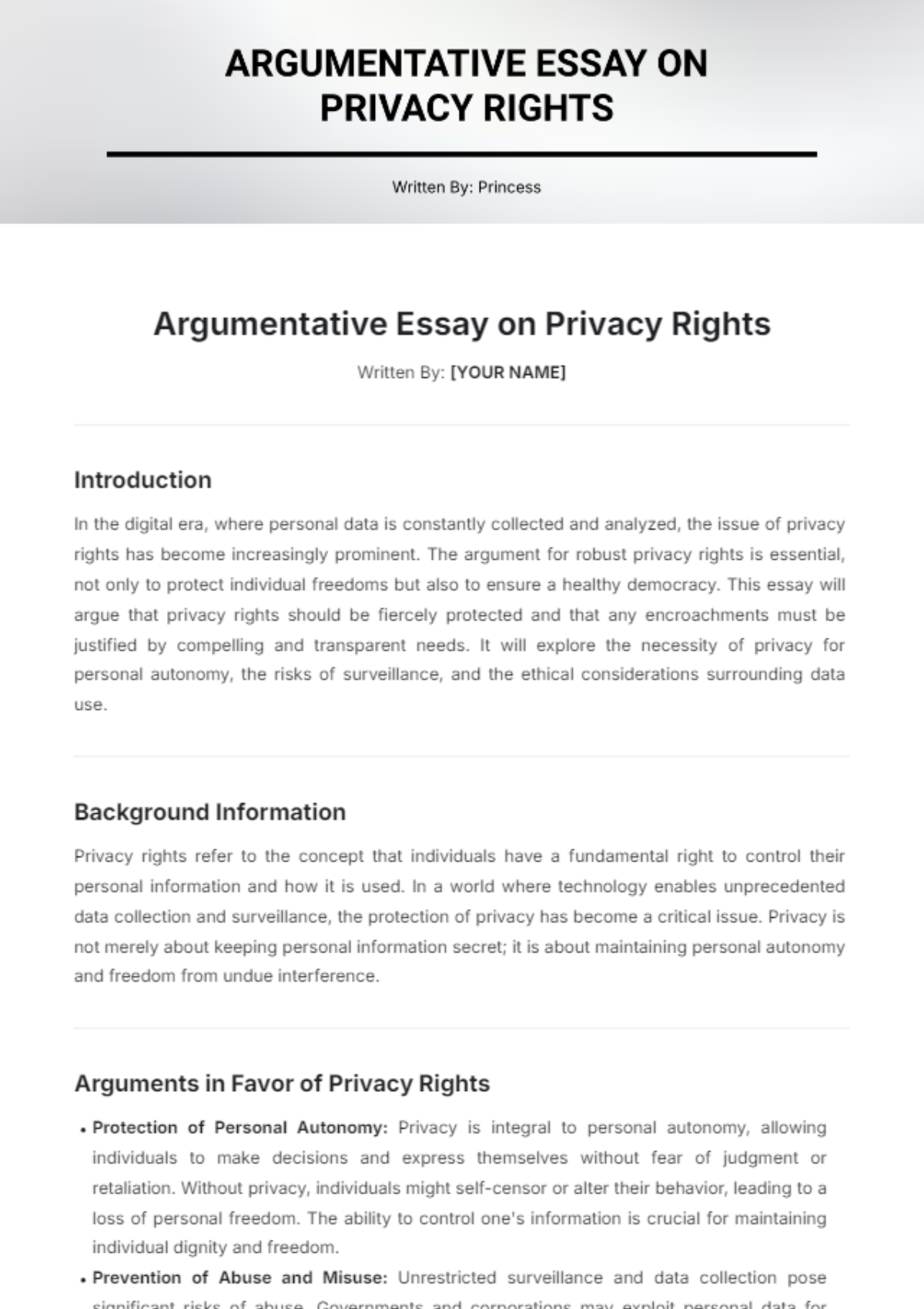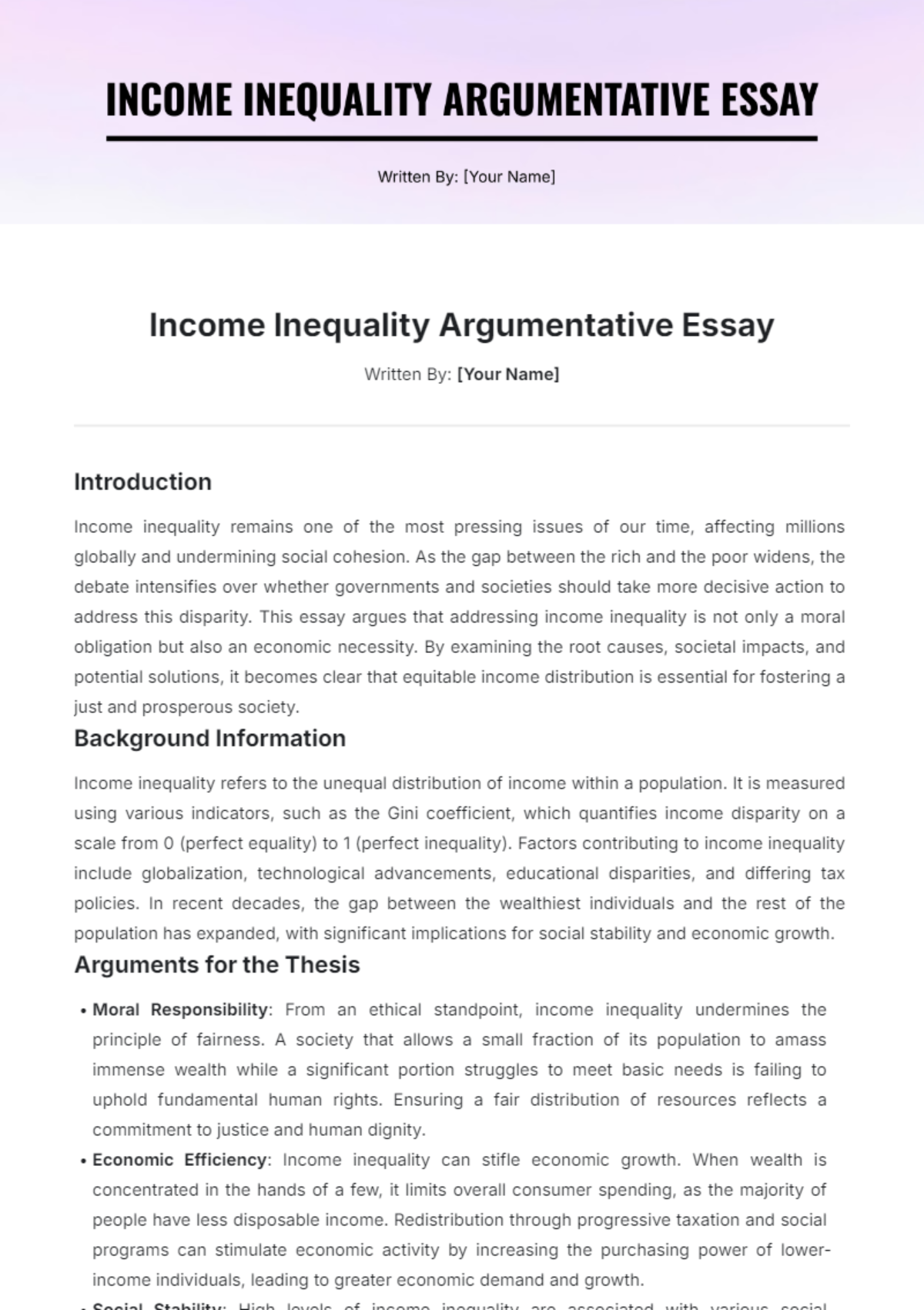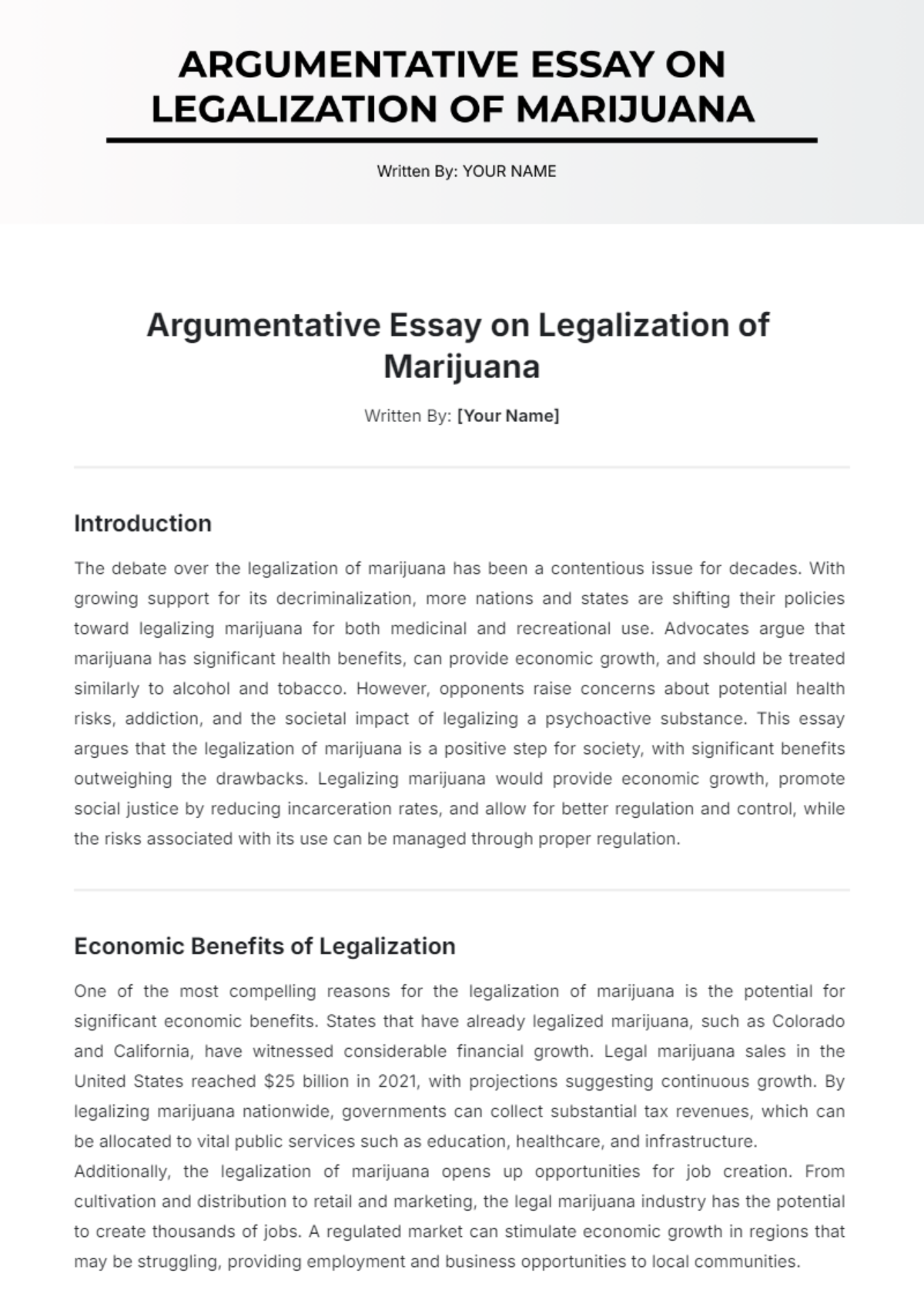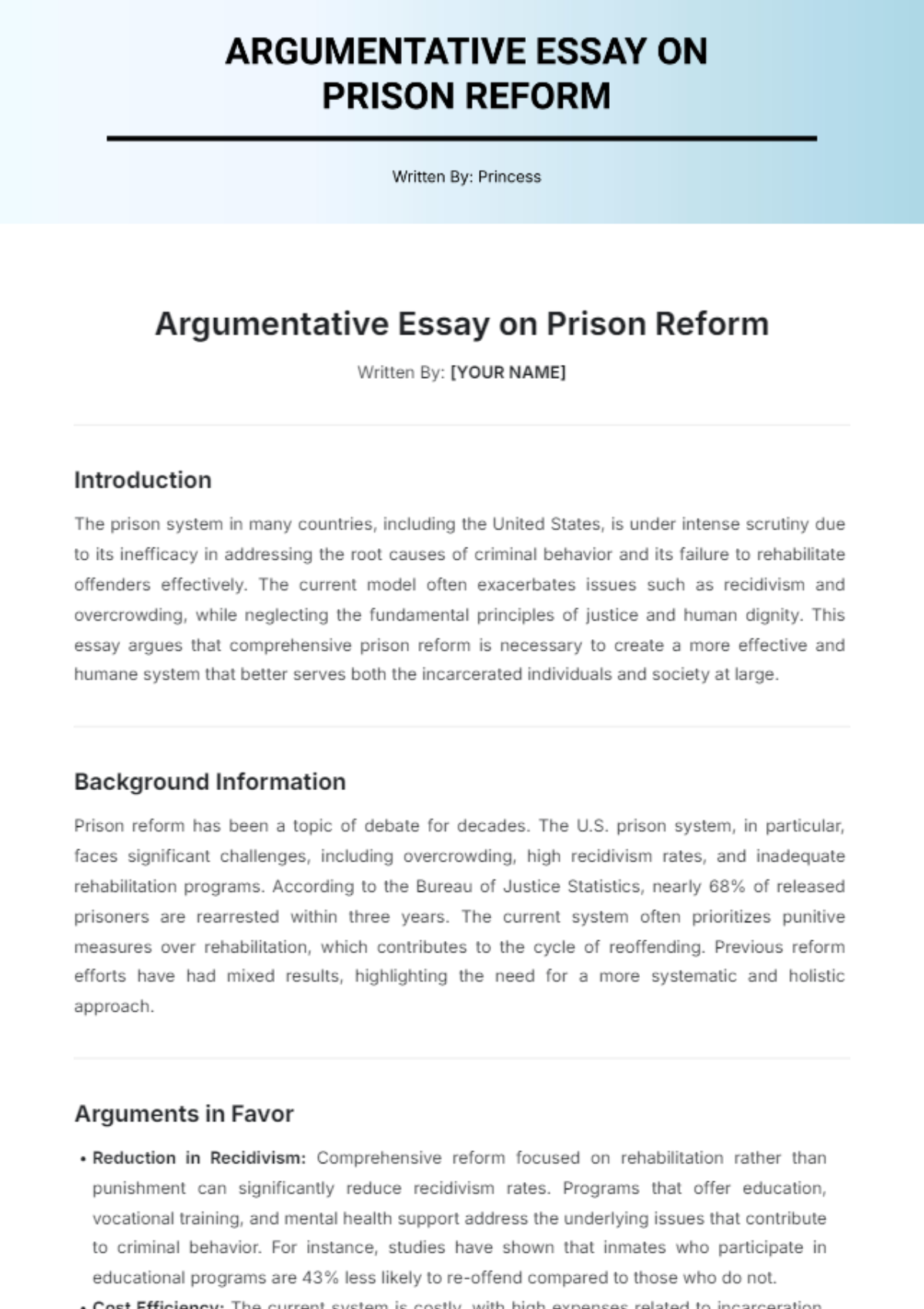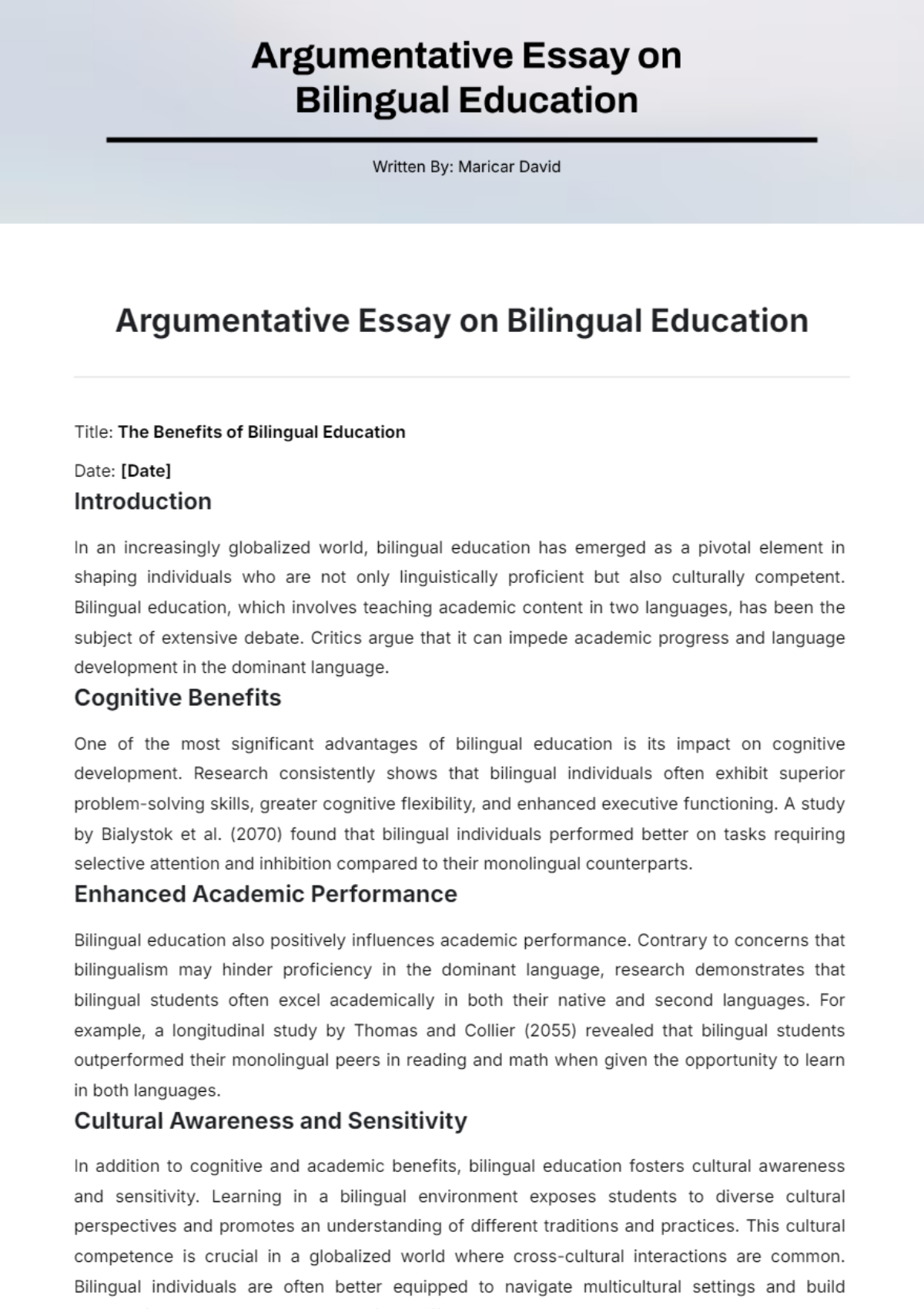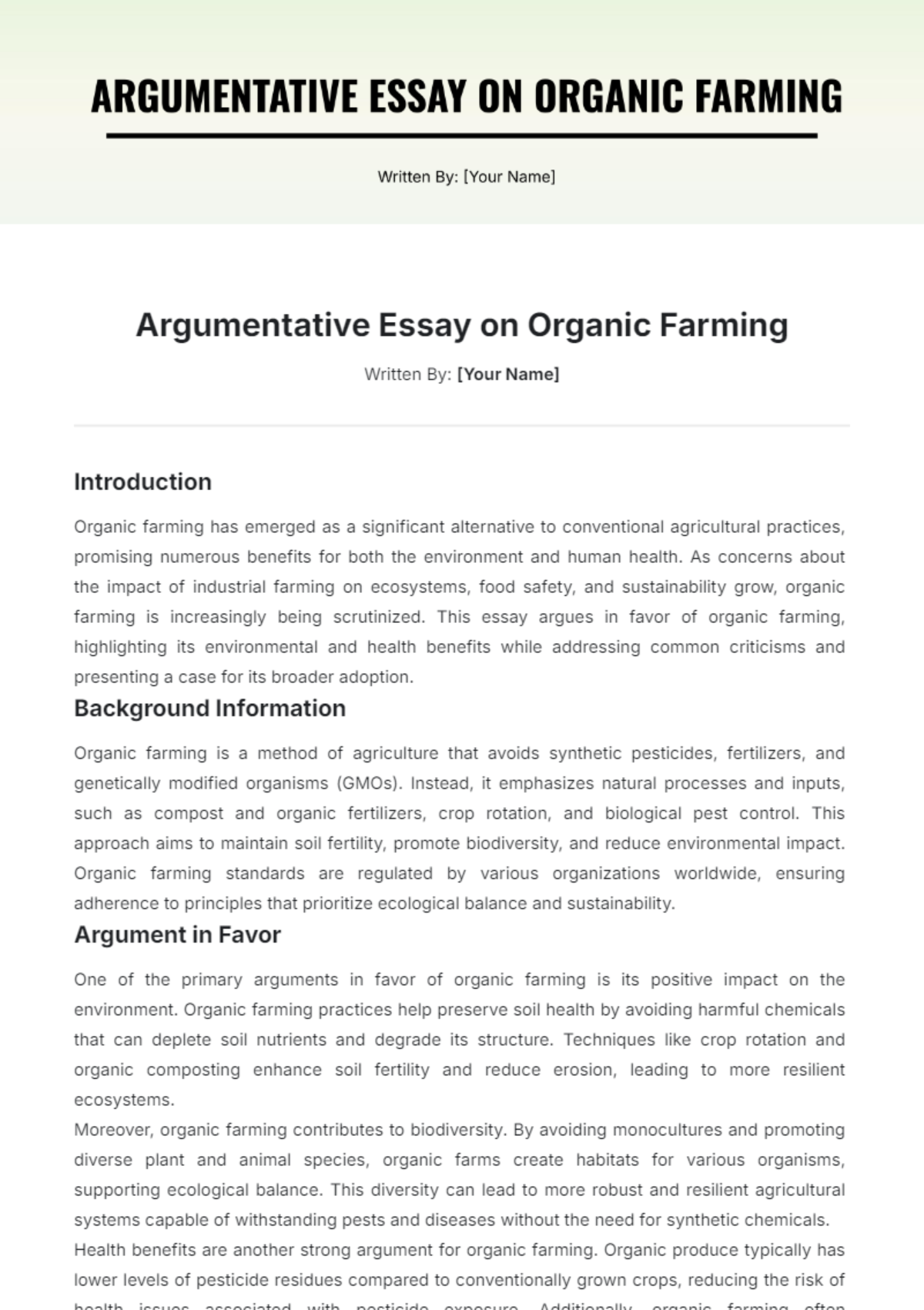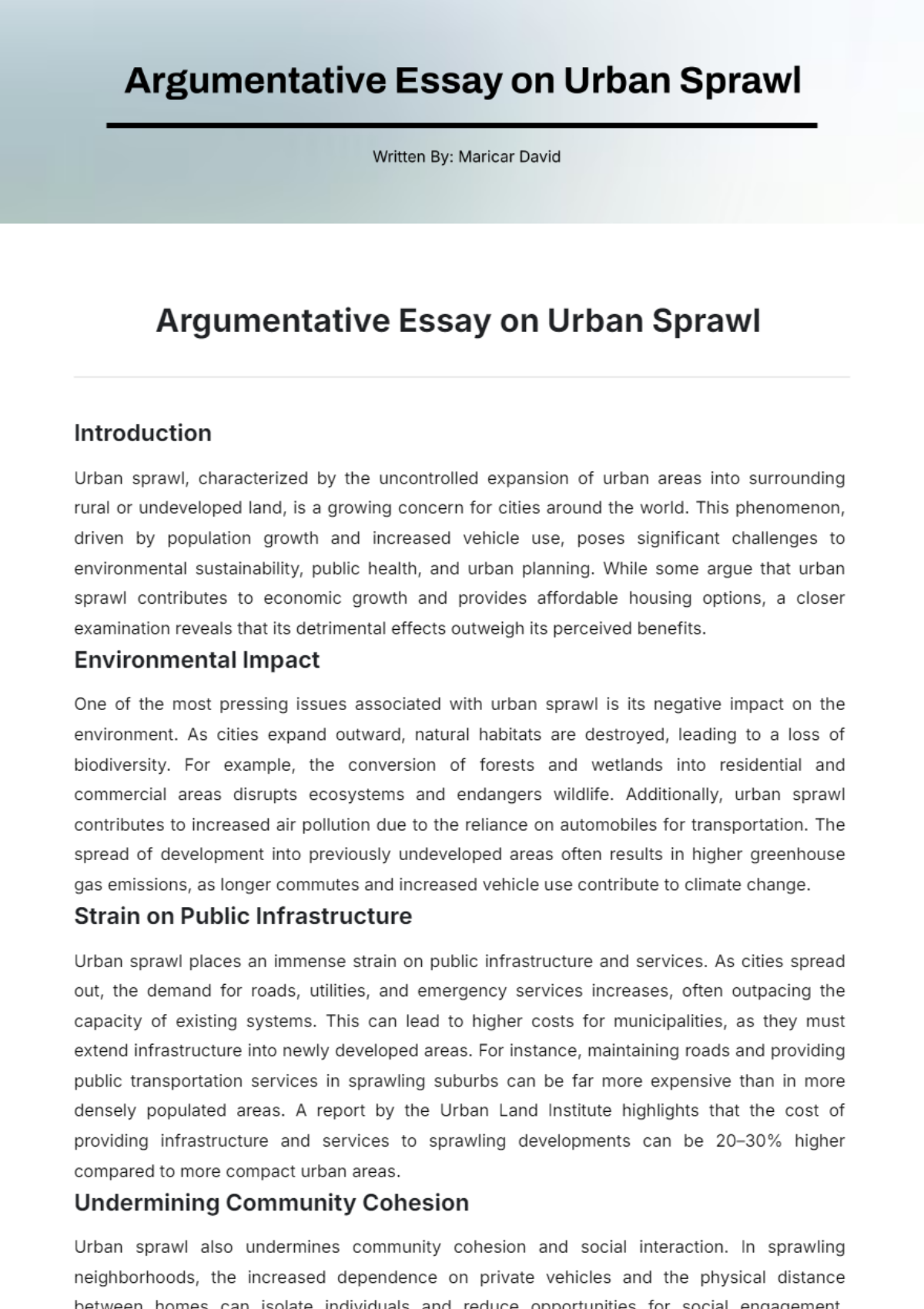Classical Argumentative Essay
Written by: [YOUR NAME]
The classical argumentative essay is a time-honored form of persuasive writing, structured meticulously to present a clear and convincing argument on a specific issue. This essay format is designed not only to assert a point of view but also to guide the reader through a logical sequence of evidence and counterarguments, ultimately leading them to a reasoned conclusion. By adhering to a well-defined structure comprising an introduction, body paragraphs, and a conclusion, the classical argumentative essay effectively persuades its audience of a particular perspective.
Introduction
The introduction of a classical argumentative essay serves as the gateway to the topic, presenting the issue at hand and stating the writer's thesis—or main argument—clearly. This section aims to hook the reader's interest, provide background information, and lay out the argument's significance (Smith, 2050). It sets the stage for the subsequent discussion by framing the context and elucidating why the topic warrants attention.
Presenting Evidence
Following the introduction, the body paragraphs constitute the core of the essay, where the writer presents evidence to support their thesis. Each paragraph typically focuses on a single piece of evidence or a coherent group of related points (Jones & Brown, 2051). The evidence can include statistical data, quotes from authoritative sources, historical examples, or logical reasoning. The key is to present this information in a well-organized manner that strengthens the argument, ensuring each piece of evidence is relevant and directly supports the thesis.
Addressing Counterarguments
A critical aspect of the classical argumentative essay is the consideration and refutation of counterarguments. This demonstrates the writer's understanding of different perspectives and enhances the credibility of their argument. By acknowledging and effectively dismantling opposing viewpoints, the writer reinforces their position (Green, 2050). This balanced approach not only demonstrates thorough research but also appeals to readers who may be undecided or skeptical, showing that the writer has considered all angles of the issue.
Conclusion
The conclusion of a classical argumentative essay synthesizes the main points discussed in the body paragraphs and reiterates the thesis in light of the evidence and counterarguments presented. It provides a final, compelling call to action or a thought-provoking statement to leave a lasting impression on the reader (Williams, 2050). The conclusion should seamlessly tie back to the introduction, bringing the argument full circle and affirming the writer's position with clarity and conviction.
Bibliography
Green, P. (2050). Effective Argumentation: Strategies for Persuasive Writing. New York, NY: Academic Press.
Jones, R., & Brown, T. (2051). Crafting Logical Arguments. Chicago, IL: University Press.
Smith, J. (2052). The Art of Persuasive Writing. Boston, MA: Writers' Guild.
